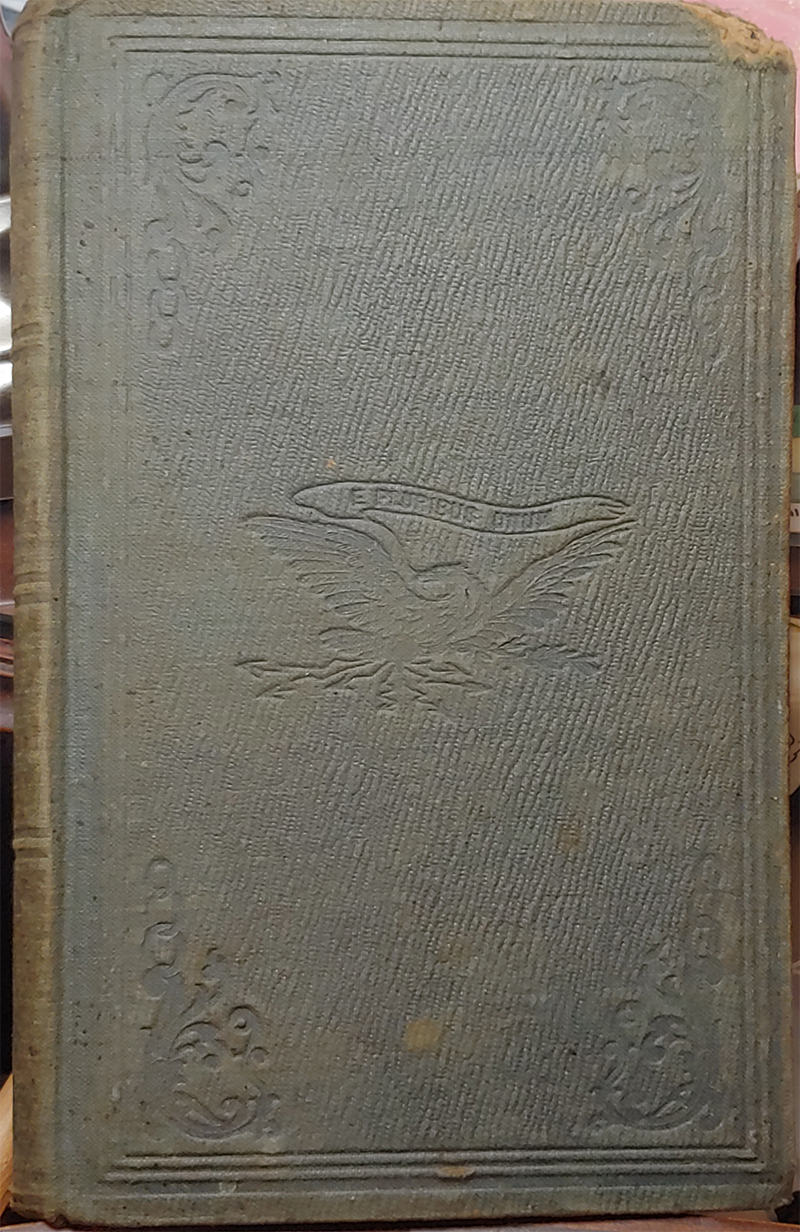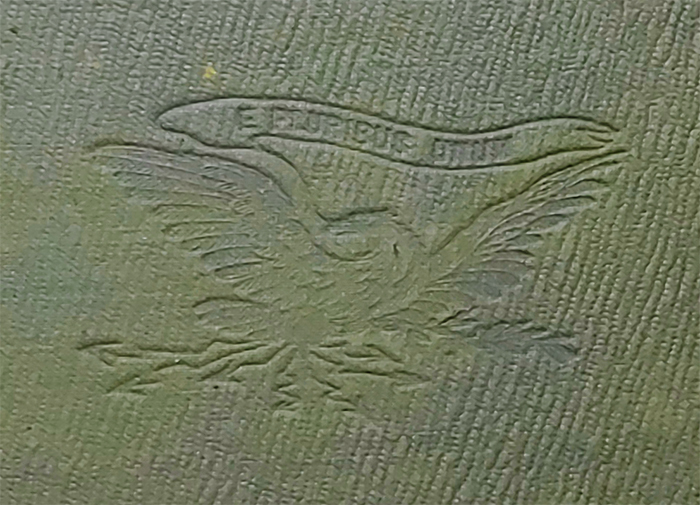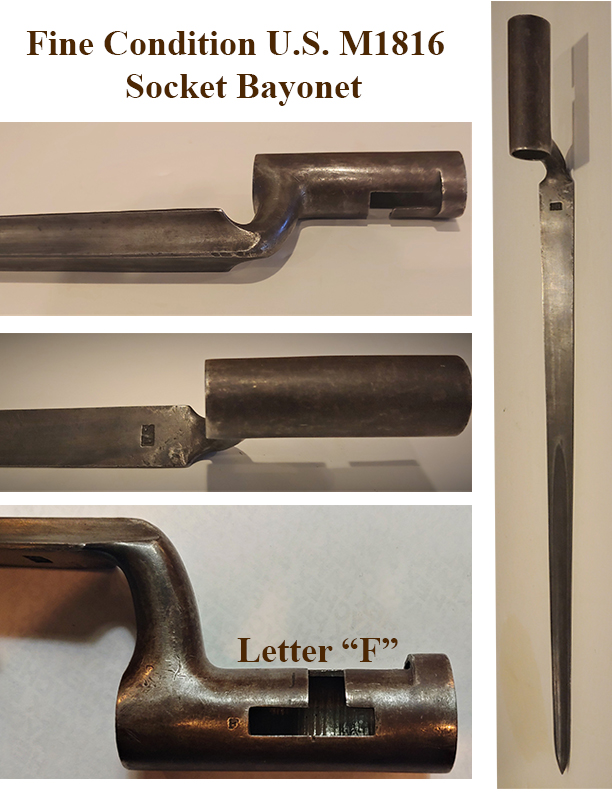February 2020 First List
Harpers Ferry Virginia Musket
: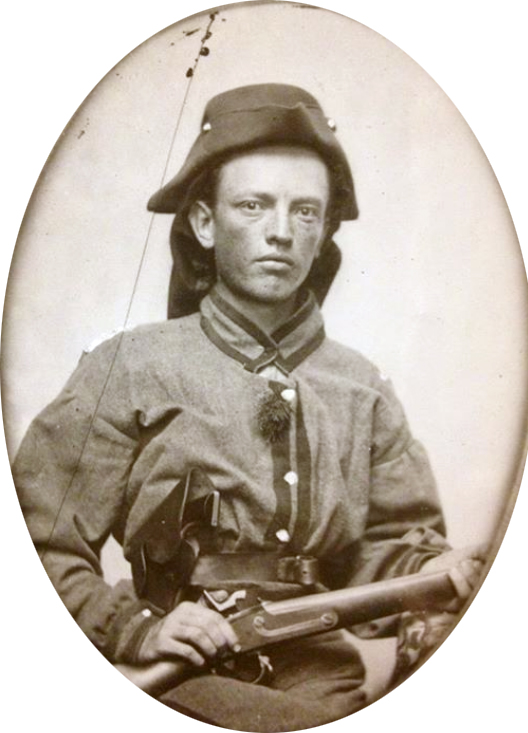

20-02-01 Attic grungy “as found” Model 1842 Infantry musket in .69 caliber and made at the Harpers Ferry Arsenal in Virginia in 1849. This was the first US issue long musket designed to use percussion caps and the first to be manufactured with fully interchangeable parts. It was also the last .69 caliber smoothbore weapon to be manufactured and issued to the US military. The 1842 musket went into production at Springfield Arsenal in 1844, with 2,956 guns being delivered that year. Production at Harper’s Ferry began in 1845, and that armory delivered 2,225 that year. The muskets were produced until 1855. Springfield producing 165,970 and Harpers Ferry producing 106,629, making the total production a hefty and generous 272,599. The M-1842 musket saw significant use during the American Civil War from beginning to end. The arms produced at Harpers Ferry have always been more desirable than those made up in Massachusetts. Harpers Ferry arms have always been closely associated with Virginia and the Confederacy. The fact that the Confederates captured the arsenal and carted off all the guns and machinery adds greatly to the mystique. This musket is as honest as they get. 100% original, 100% complete, and mechanically perfect. All steel surfaces are uniformly patinated in rust brown. The wood shows good old scuffs and bumps and is incised on the right side of the butt with the owner’s initials. Lock markings are clear with date of 1849. Barrel breech proof marks and eagle’s head are vivid. The date on the tang is buried under rust or obliterated. Both sling swivels are intact. The lower barrel band shows a slot where I presume the shooter installed a simple notch rear sight which later fell out. The ramrod is the proper trumpet contour style. There are no threads at the end of the rod for affixing a worm or puller. I cannot see the inspector’s cartouche on the counter pane which is NOT unusual on the model 1842. They frequently appear with no wood stampings whatsoever. This good old musket may have been carried by a Reb or it might have been carried by a Yank… about 50/50 chance either way. But you know it definitely was made in Old Virginny. And it has all the attic charm you could hope for. A very affordable piece of history. $795.00

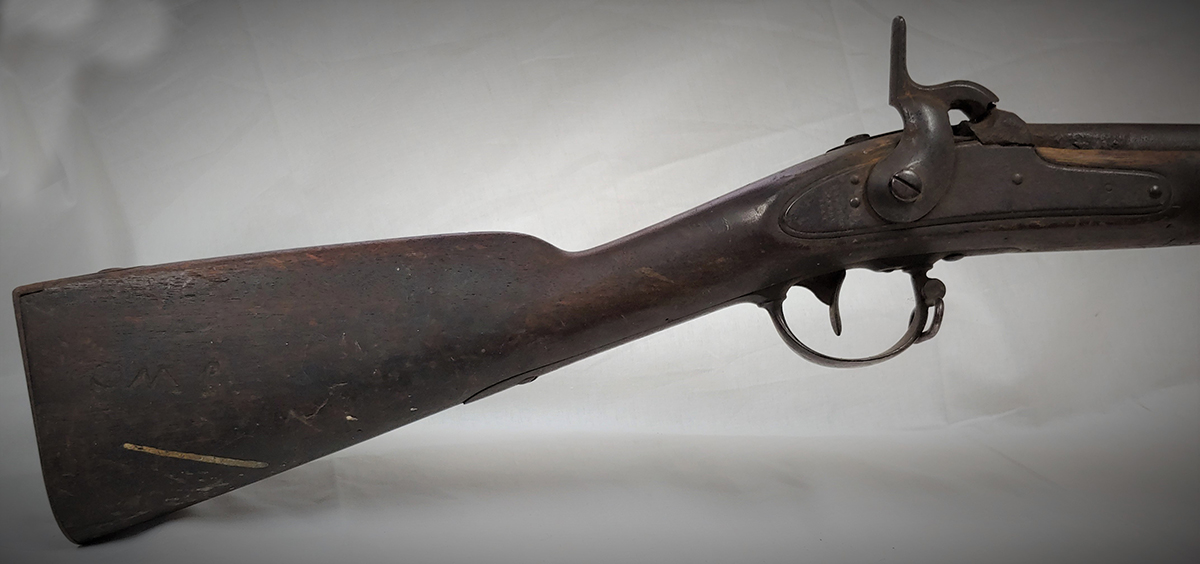
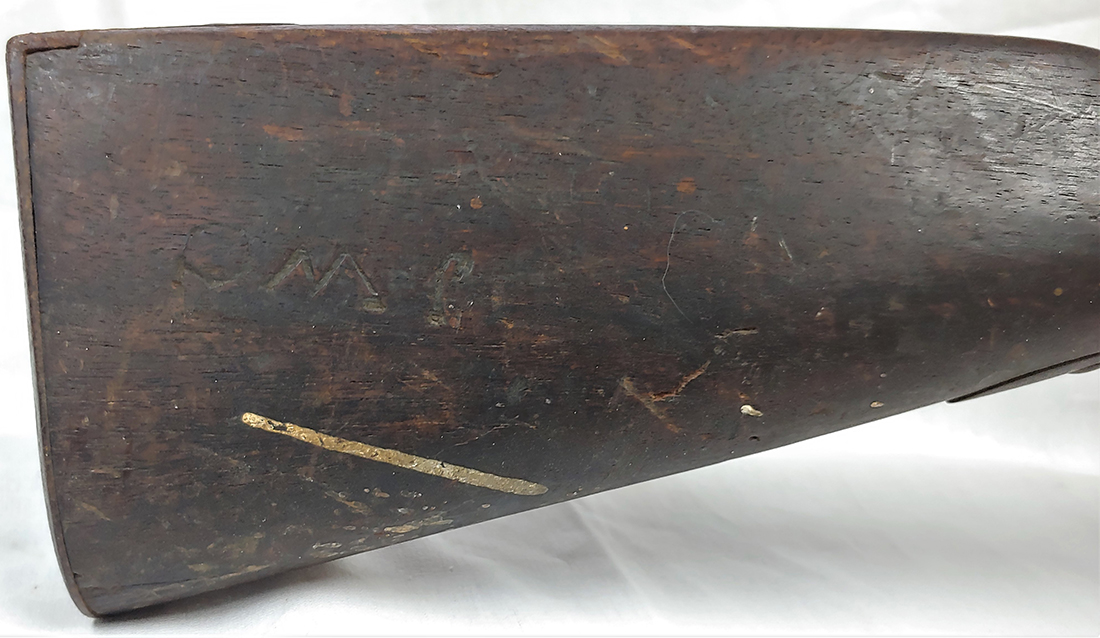


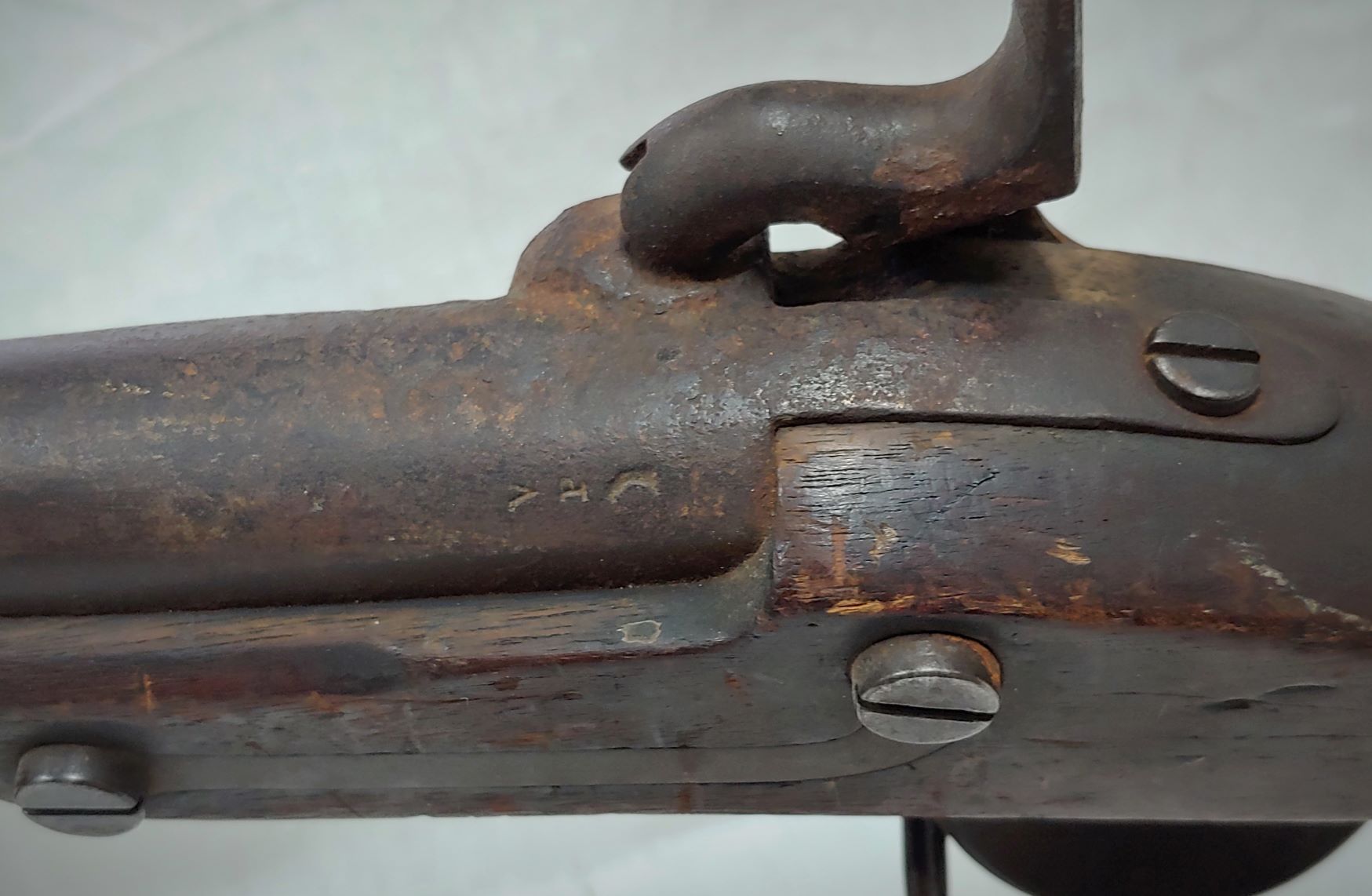
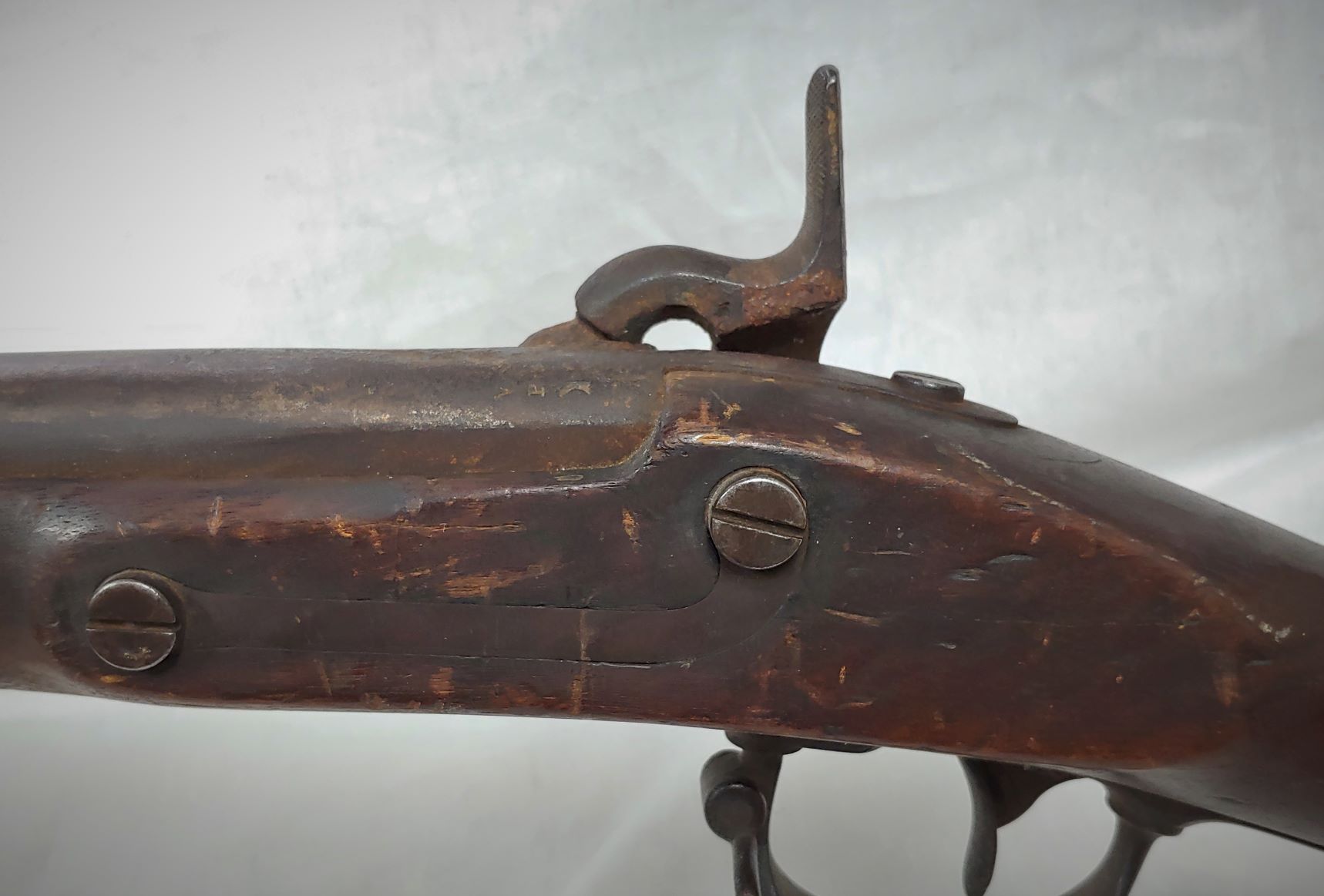
*****
Tintype Baby Yankee Infantry”men” ???
20-02-02 Sixth plate tintype. Apparently brothers. They look like Junior High School kids to me, but that may simply be a function of my age which causes me to think everyone else looks young. Can’t tell if the left hand subject is cavalry or infantry. The collar on his greatcoat is cavalry style, but his cape is not long enough and it has large buttons. His presumed sibling has the infantry length cape on his overcoat with the proper six small buttons. Image is crystal clear and housed in a desireable thermoplastic Union case which incorporates a facsimile US $10 gold coin in the lid. Case is VG showing just light handling. $250.00
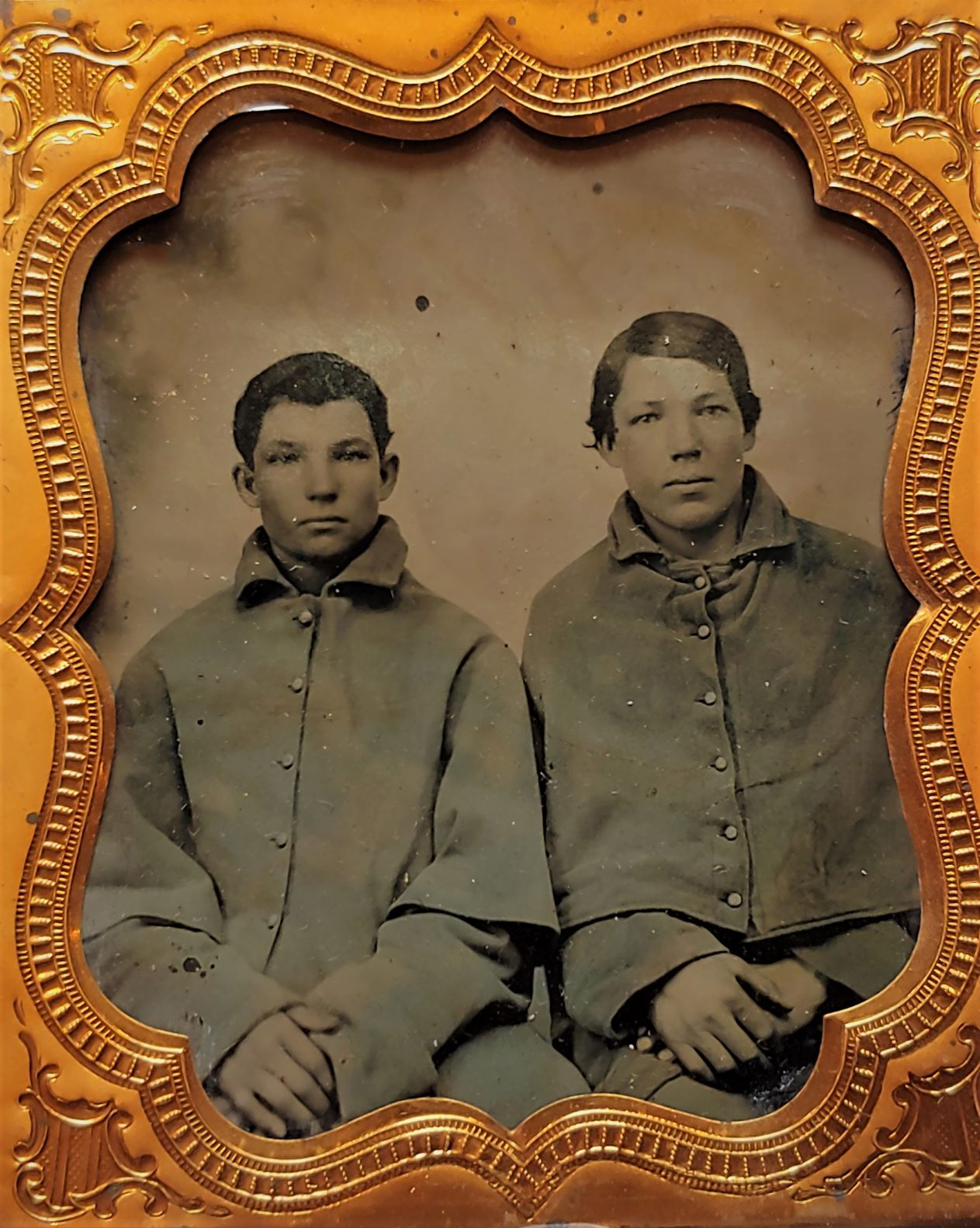
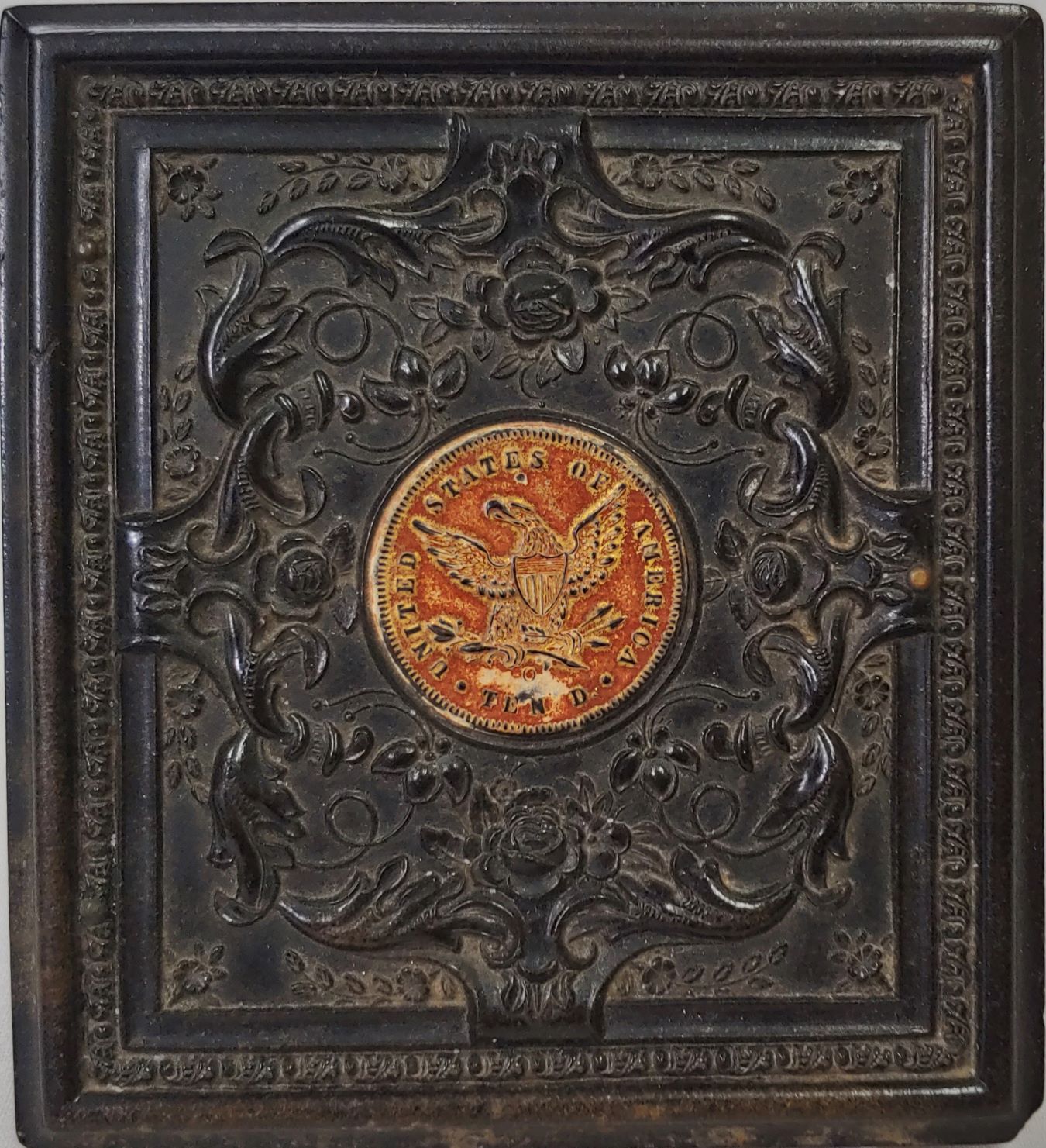
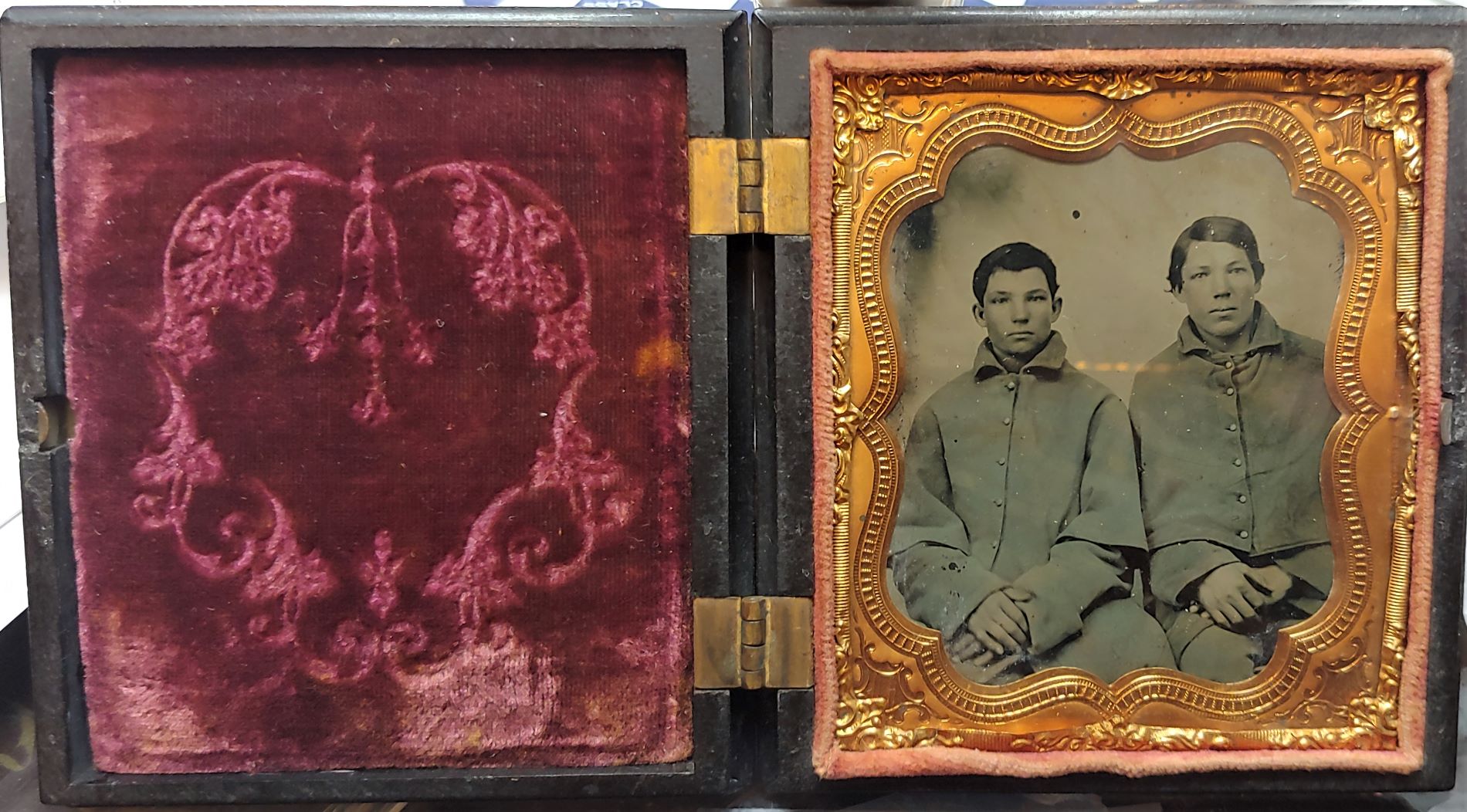
The line in the above illustration is a light reflection.
******
Currier & Ives Color Lithograph
20-02-03 Framed and highly attractive Currier & Ives Civil War lithograph printed in the 1860s. Excellent condition, vivid colors, and wonderfully composed. These were Hand Colored individually. Cap box shown for size comparison. Nice livable size and very affordable. $165.00
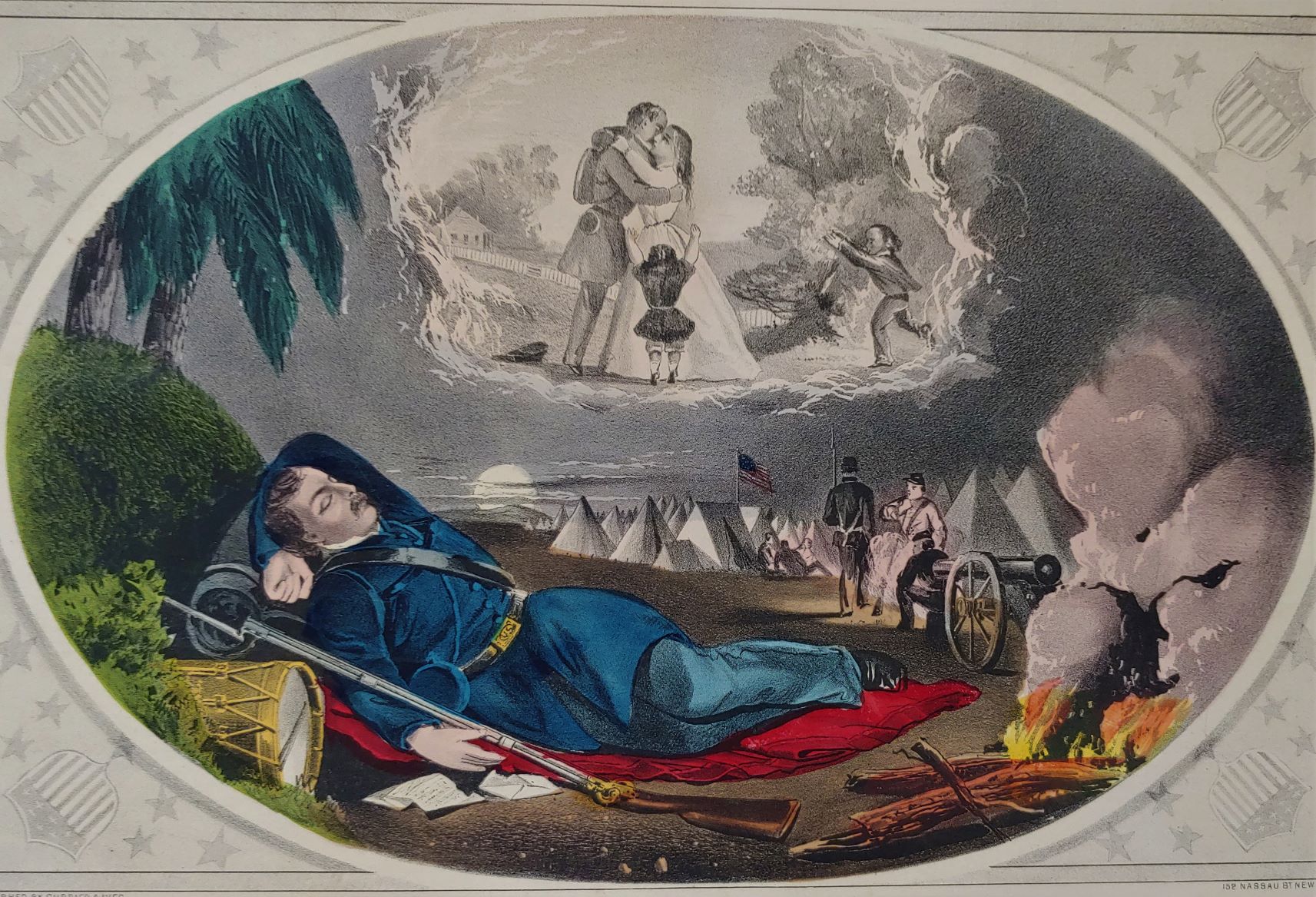
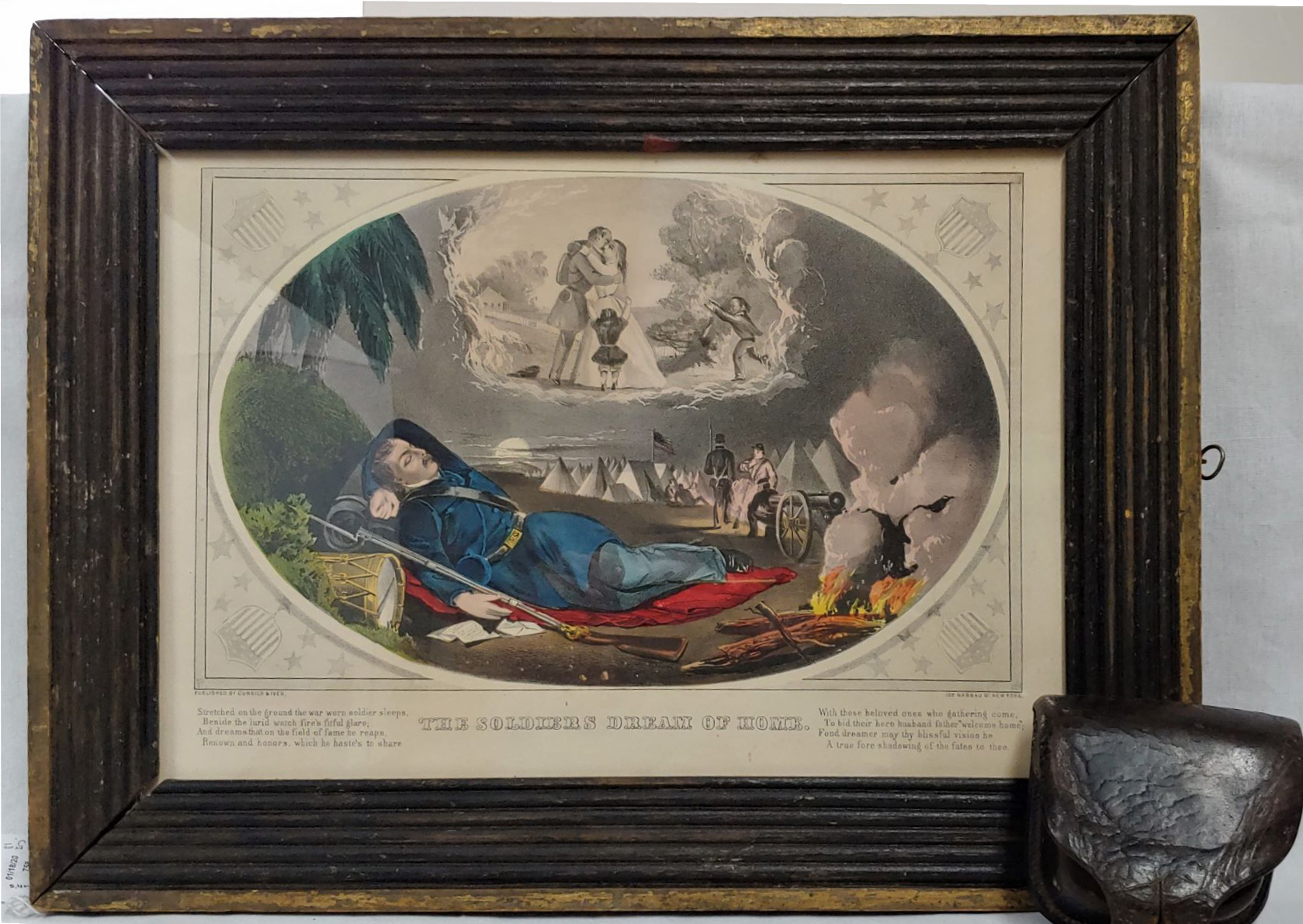
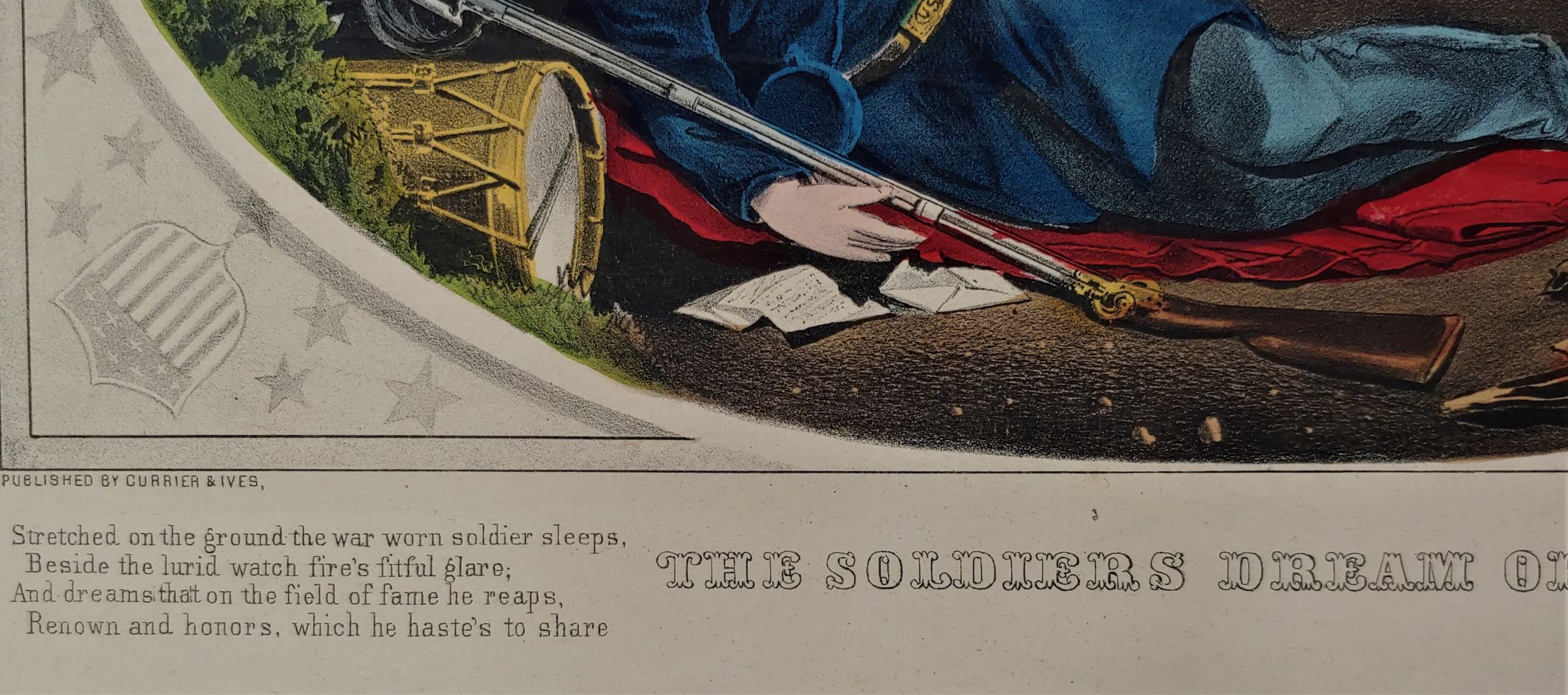
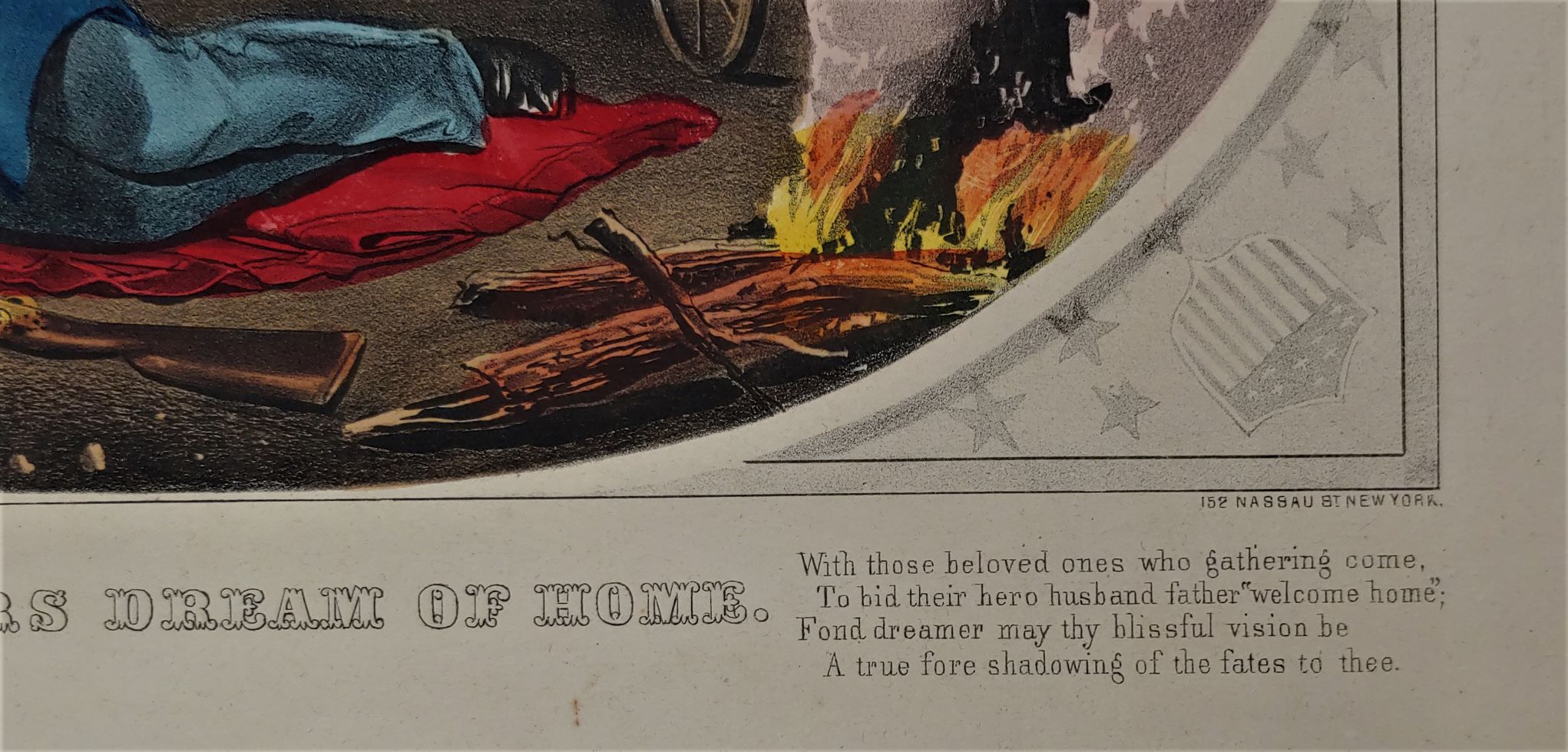

*******
Fine Colt Style Powder Flask
20-02-04 This powder flask is in very good condition, with no dents or seam openings, and retains the complete charger assembly. These patriotic flasks are proper with Colt 1849 Pocket Revolvers, but could be used with any .31 caliber percussion pocket revolver. Each side bears an eagle identical in style to the eagles found on “Colt’s Patent” flasks, with raised wings clutching arrows and olive branch, and holding a U.S. shield in front. An arc of sun’s rays spreads over head, and above that are two rows of stars that spill over on each side. At bottom is ribbon with the “E Pluribus Unum” motto, and between that and the shield clutched by the eagle is a crossed pair of revolvers.
The eagle motif appears on both sides of the flask, which shows lots of its original brown lacquer finish mixed with a nice patina with just a few stains and some rubbing to bright on the high points of the design, and one very small spot of verdigris on a wing. The thumbpiece, spring and spout are there and functional. This would make a nice addition to a pocket revolver or western display, or even help fill out a cased set in case you are trying to put one together. $325.00

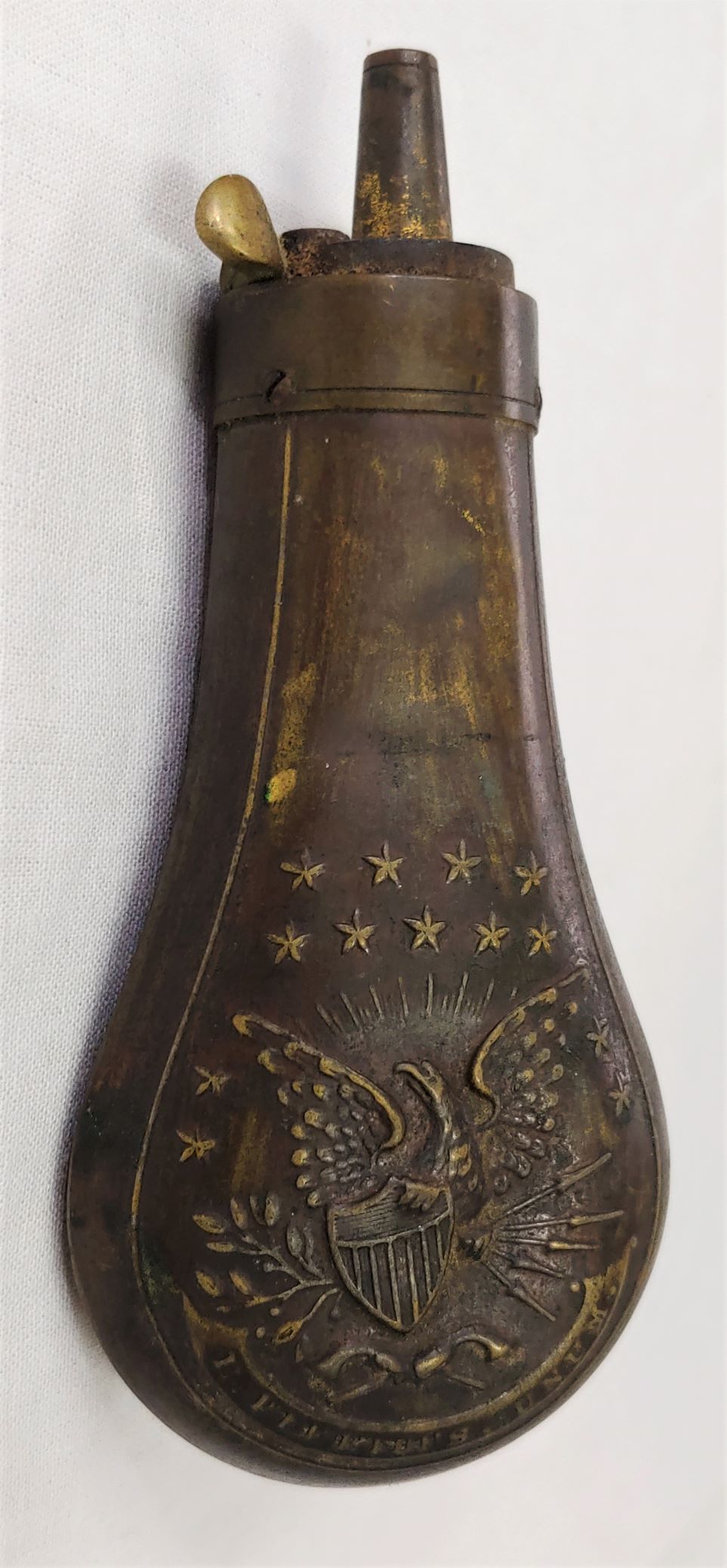

*****
1860 Colt Army Revolver
20-02-05 Early war four screw .44 caliber Colt Army revolver made early in 1862.. 100% original, 100% complete, and mechanically VG. All steel surfaces are deeply patinated a deep rust brown color. All serial numbers match (wedge not checked). Mosby carried a brace of 4-screw armies early in the war, and another brace later when his first set was captured. The fourth screw was for attaching the optional shoulder stock which the government declined to purchase. By late 1862 Colt produced only the standard three-screw models. All markings are vivid. The cylinder scene is partially visible. This one saw service. $1,395.00
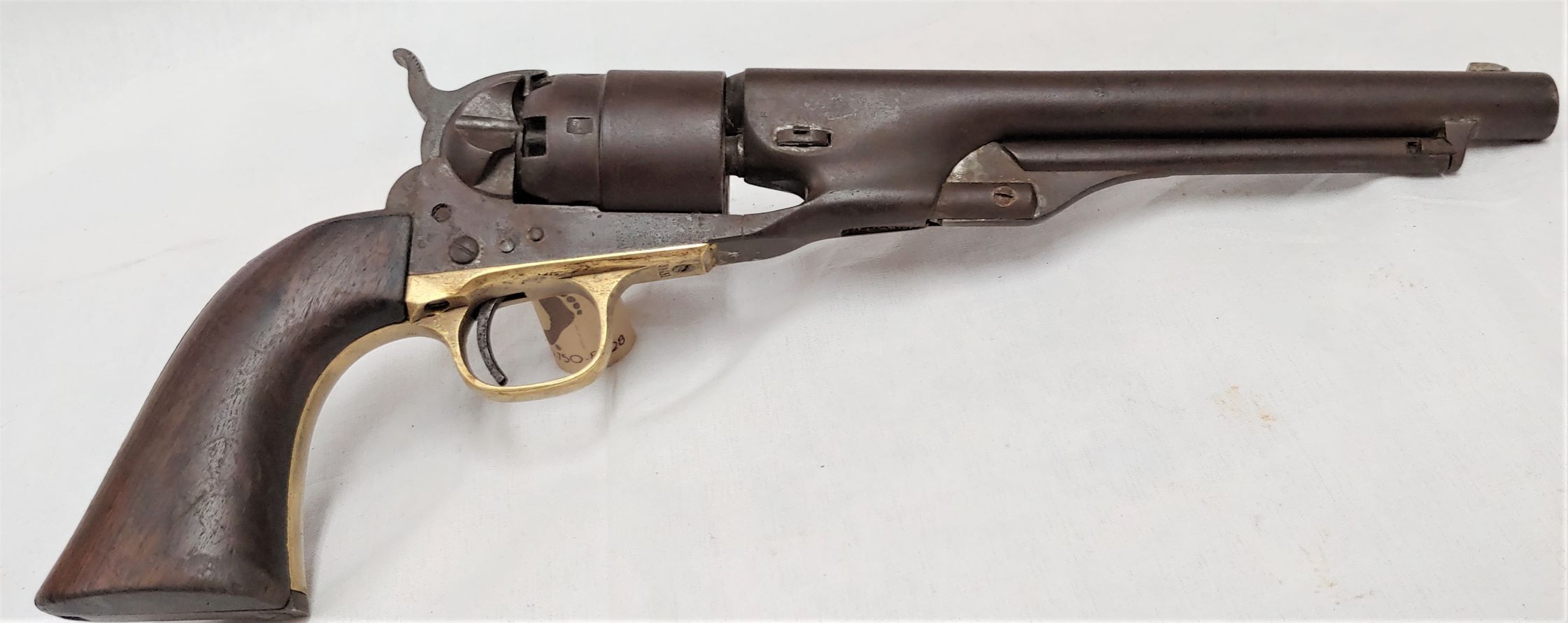

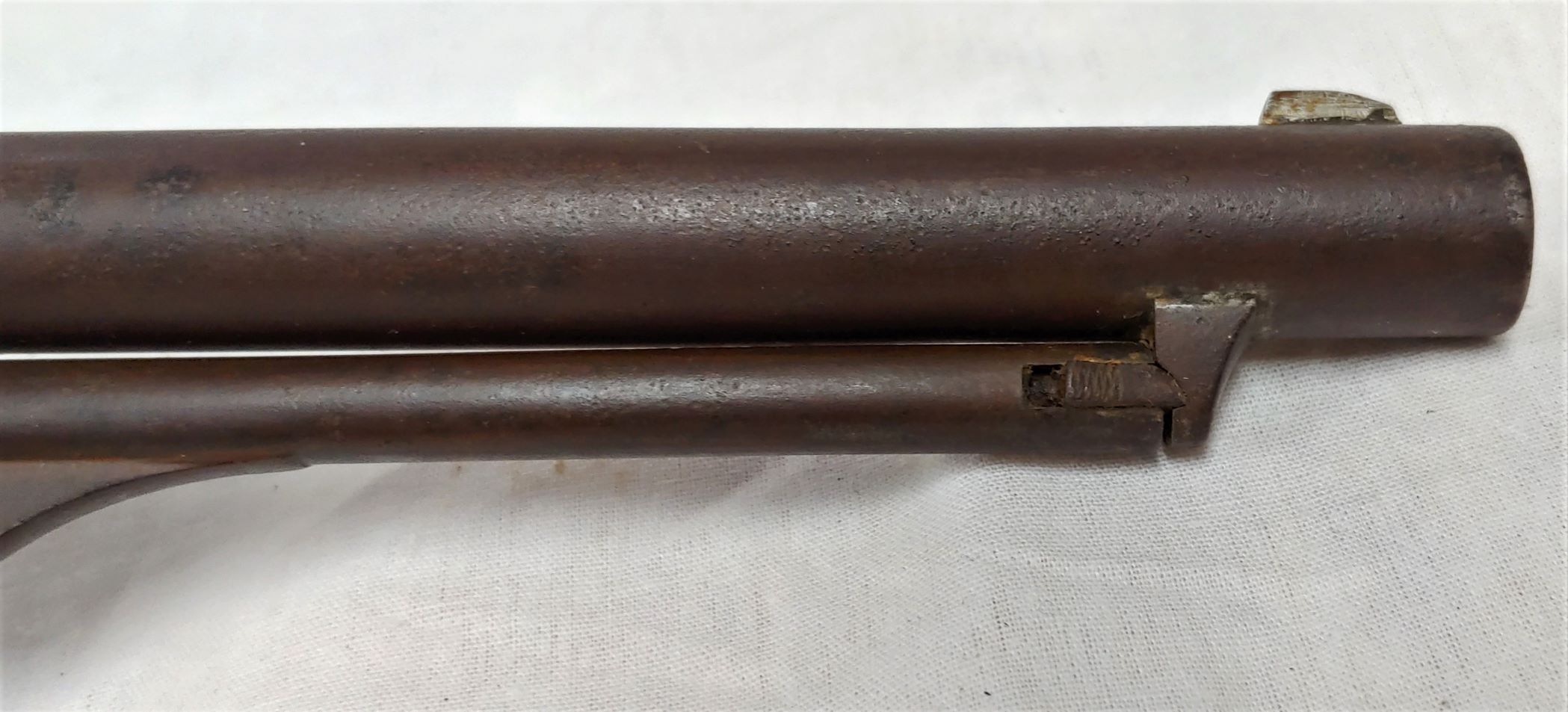
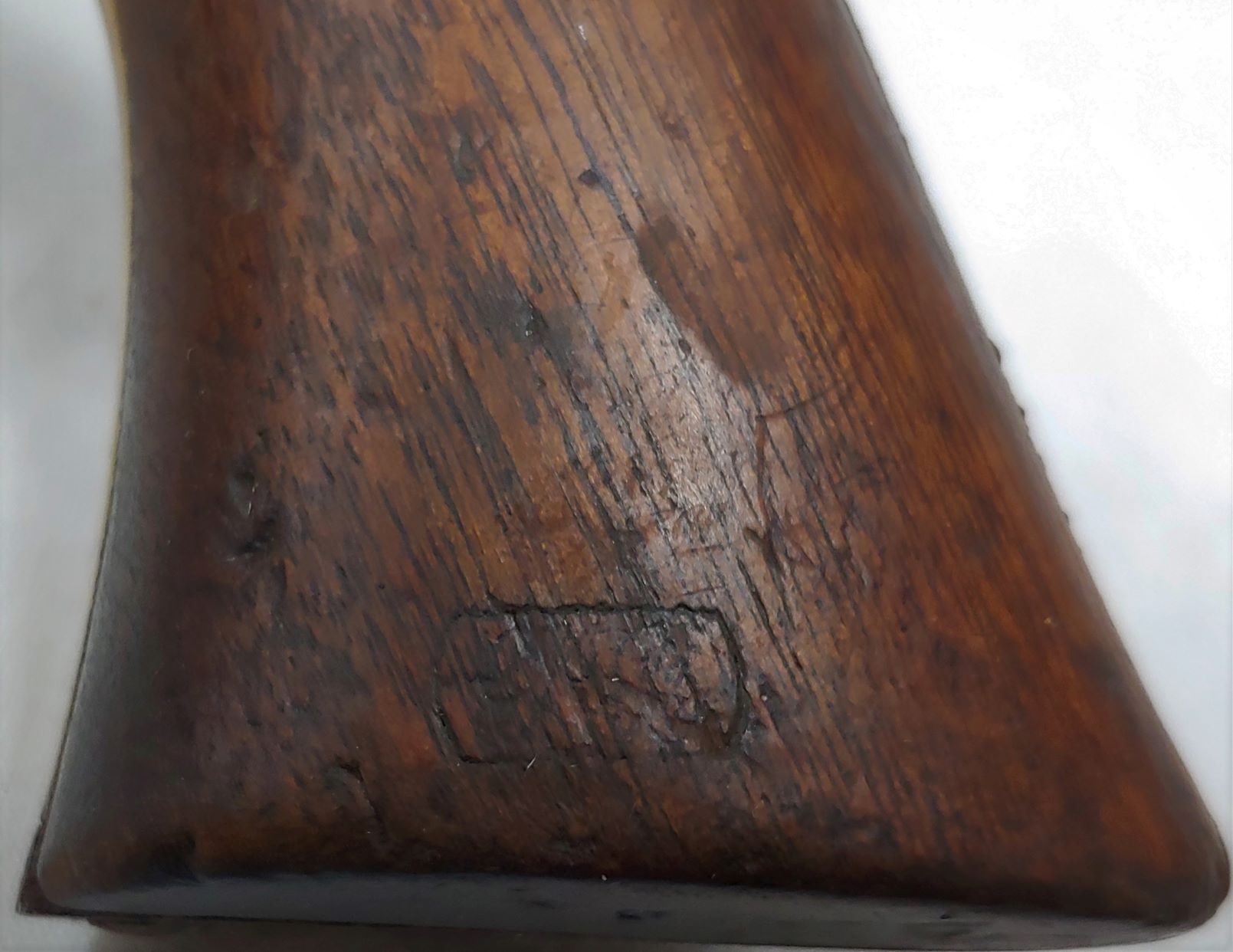

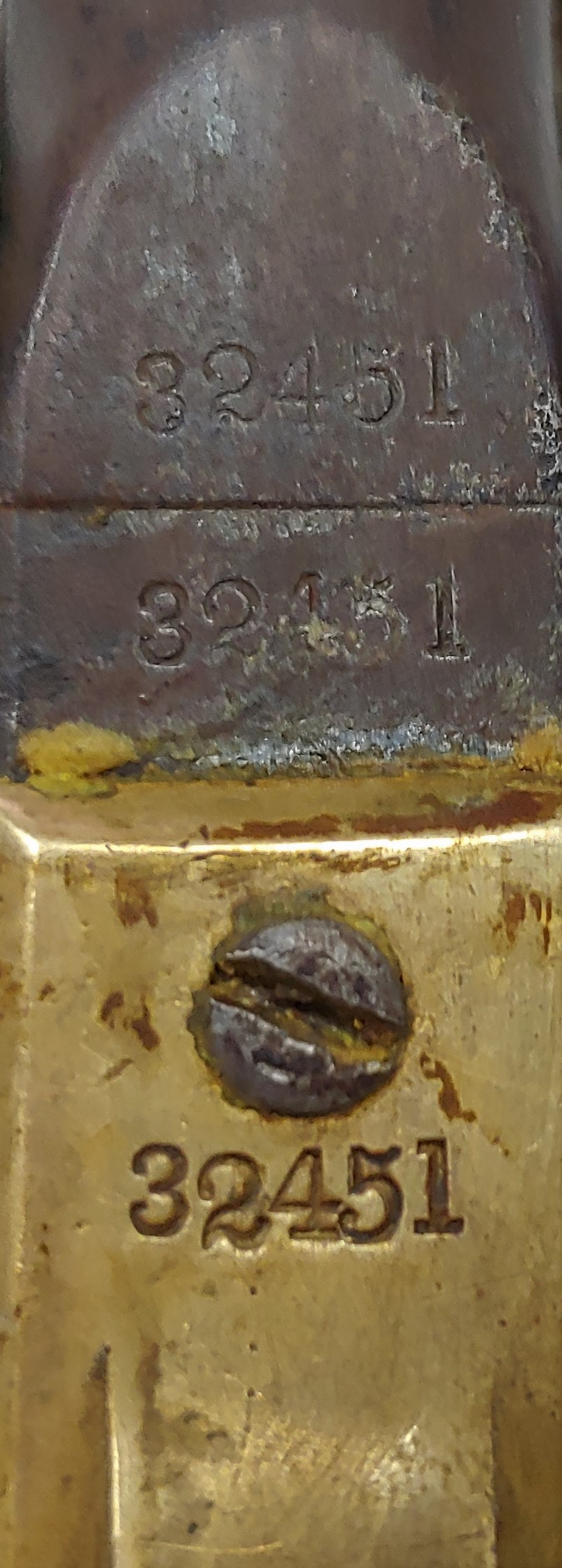
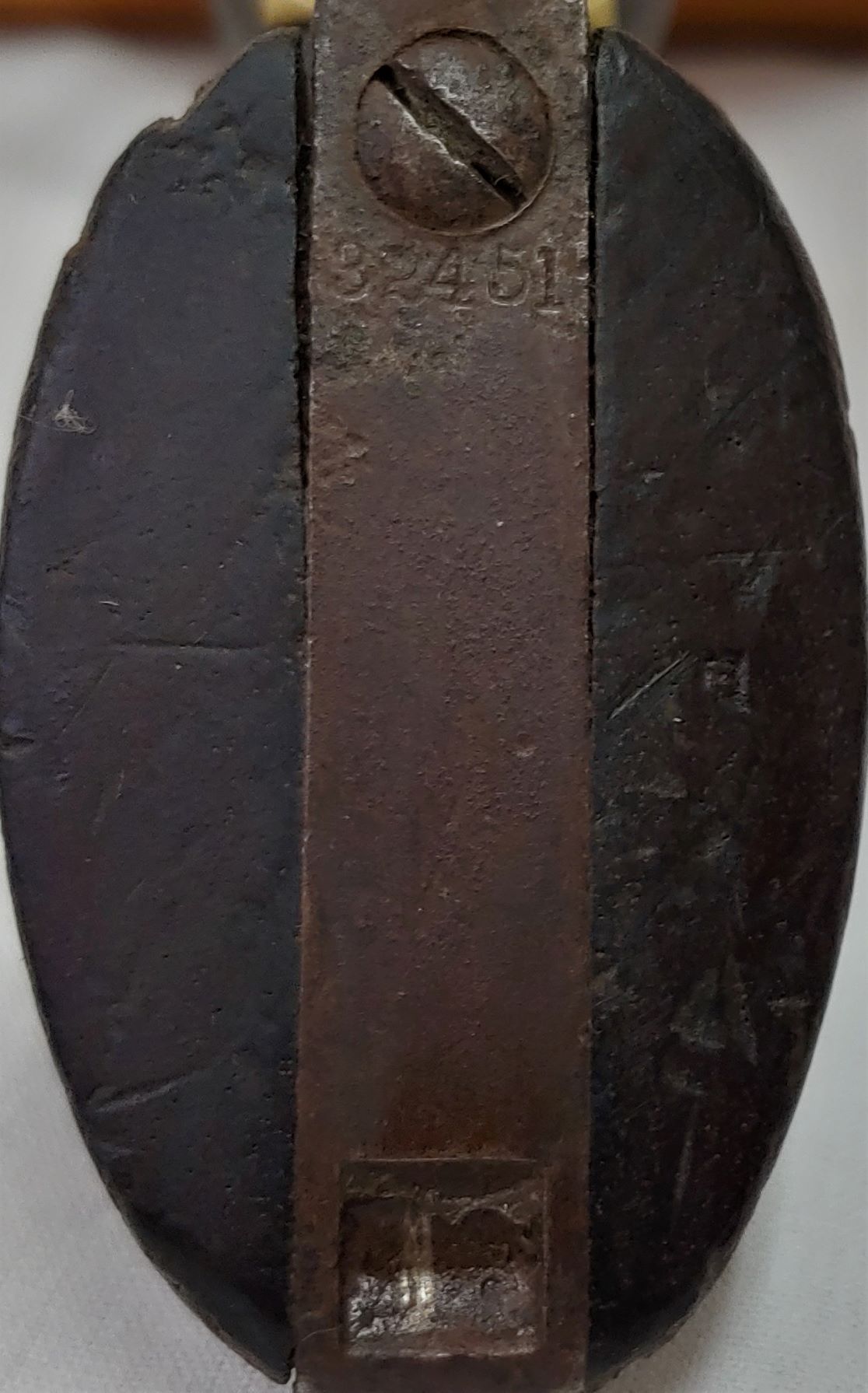
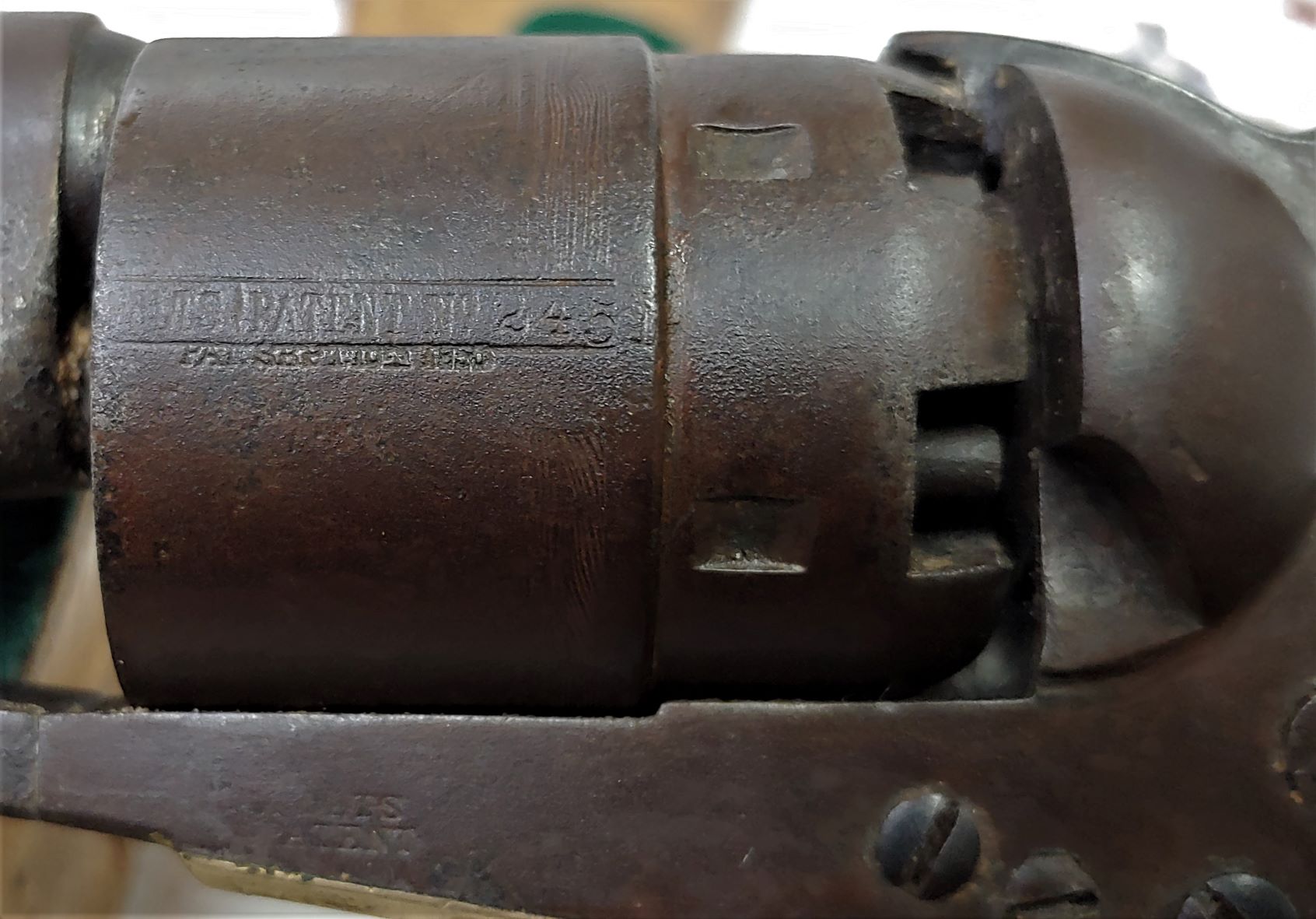
*******
Very Nice Brown Cap Box
20-02-06 Standard Yankee cap box with maker’s marking clearly visible. Nice color and sound condition. The pictures tell the story… $125.00

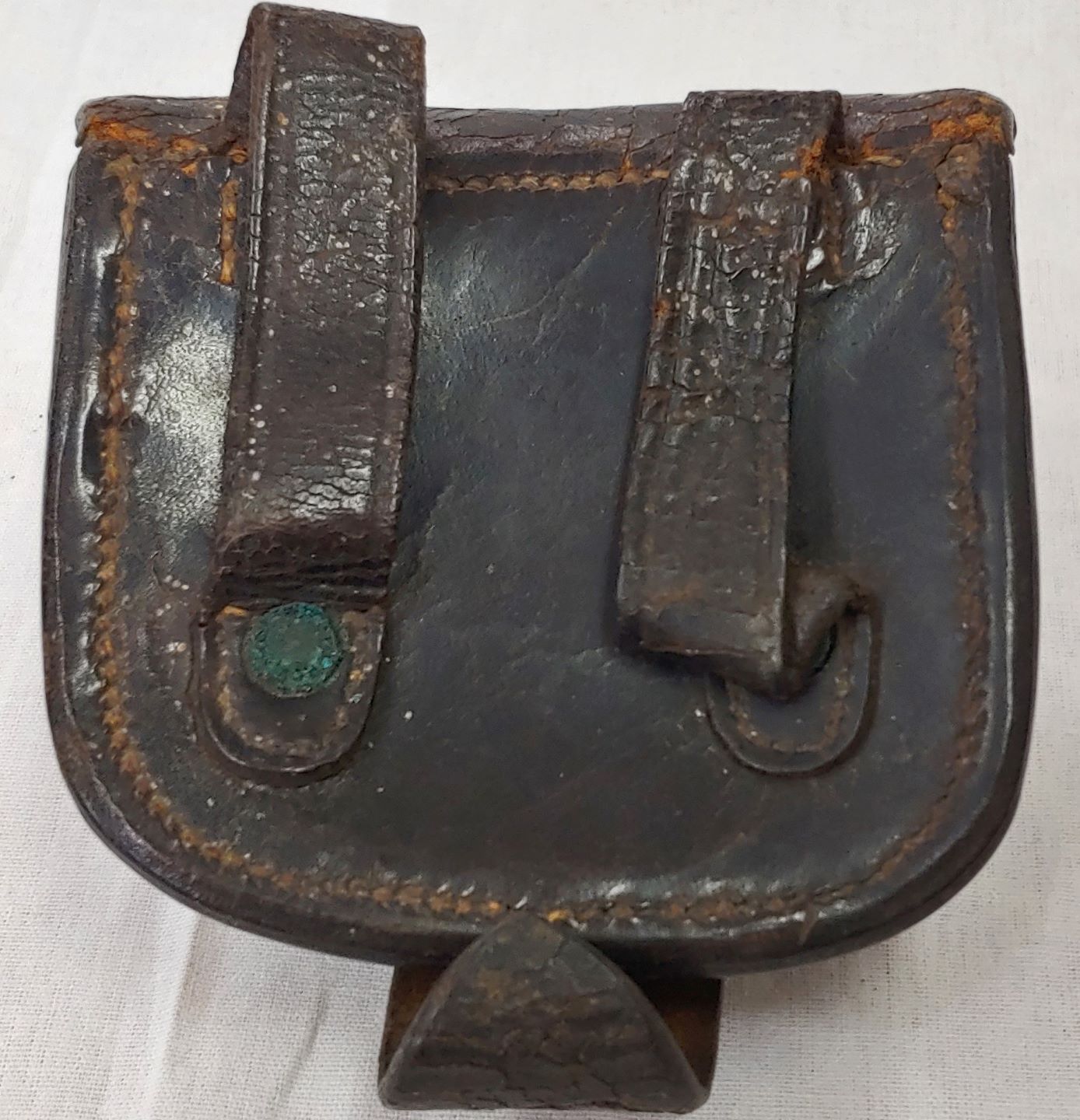
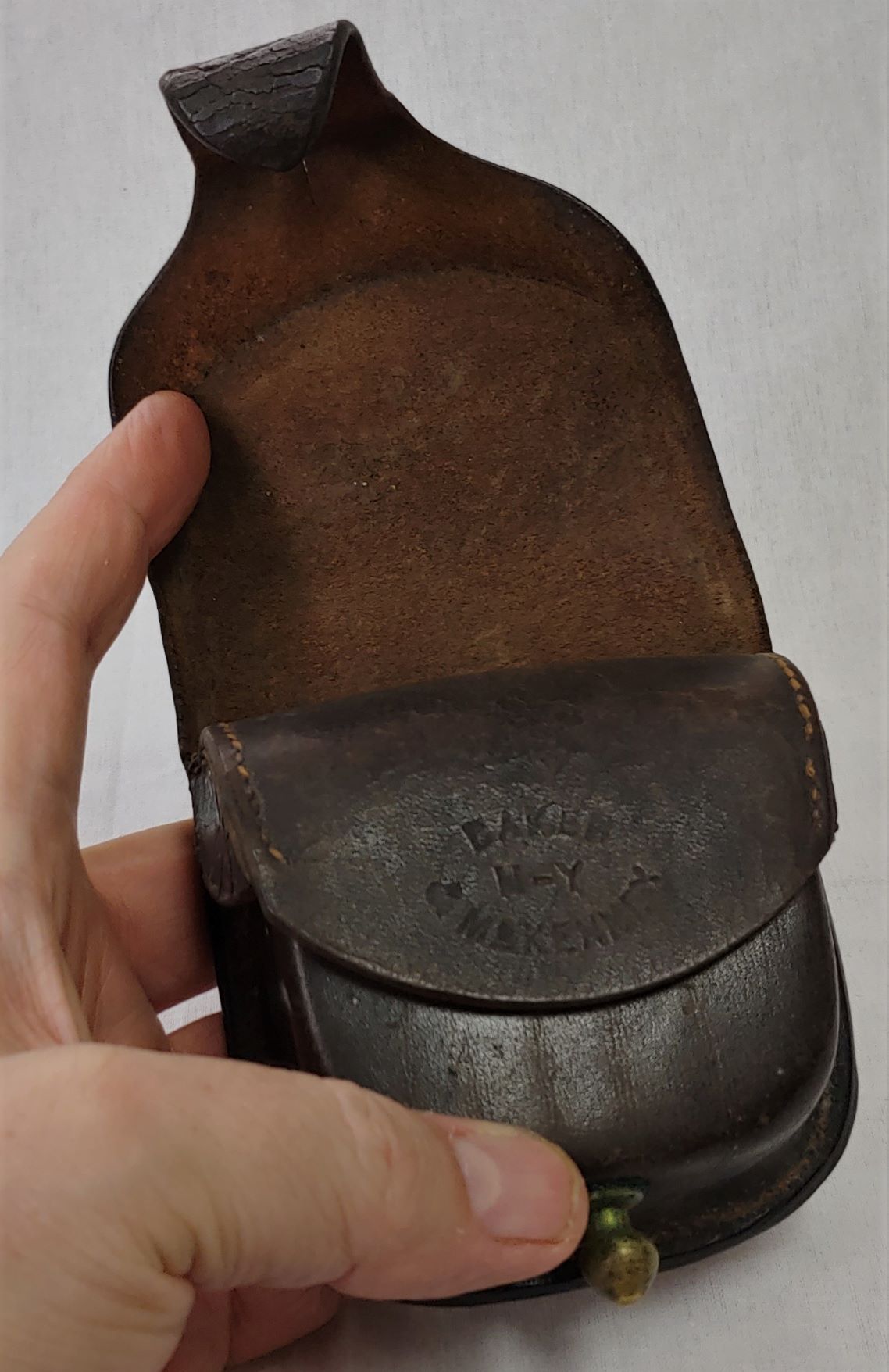
1864 Cartridge Box Definitely Battle Carried
20-02-07 This is a complete and very solid example of the Union Army 1864 pattern cartridge box that shows every earmark of real usage during the war. It is complete with the tin liners. The liners have the deep gray patina seen on attic stored boxes. The wear and crazing on the leather is likewise totally consistent with attic storage as opposed to Army Surplus storage. All straps and buckles are firmly in place. The yank that wore this one also used an oval US cartridge box plate on the front flap which is no longer present. This one was really there… Priced like a gift… $235.00
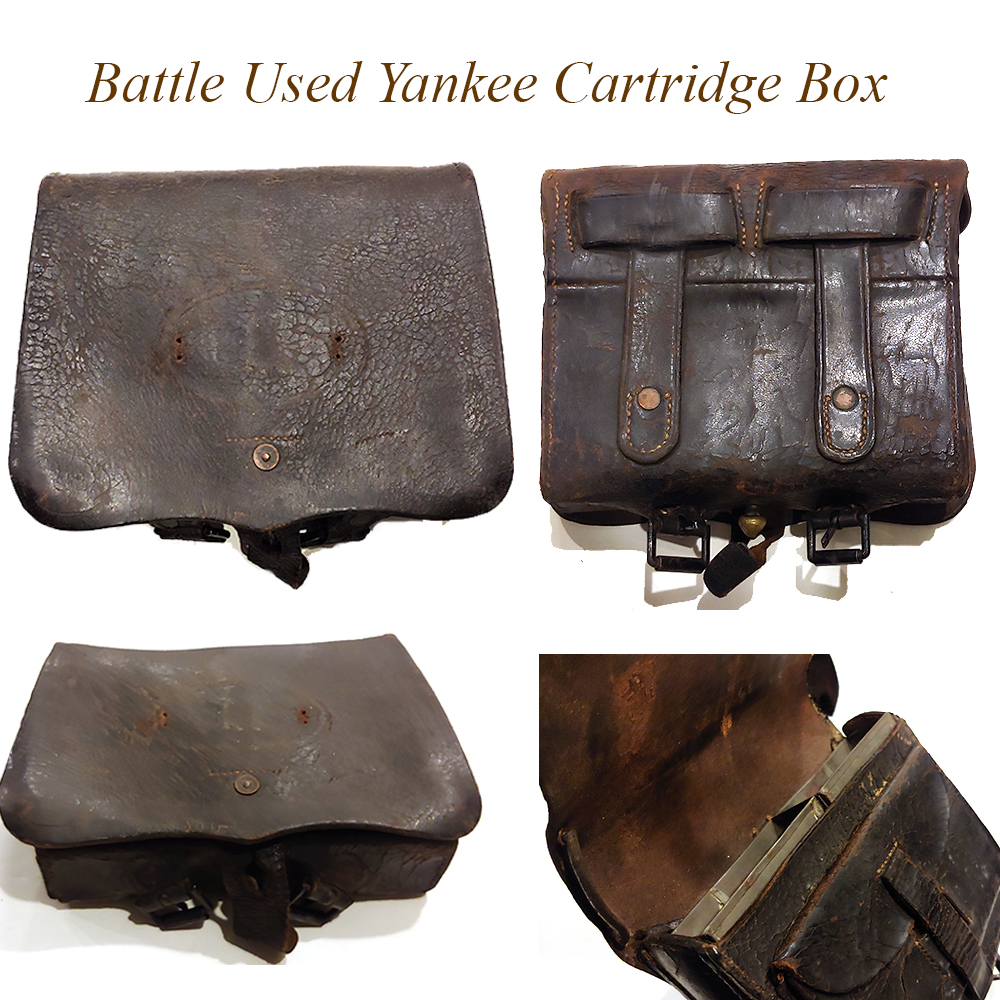
====
.
Very Rare Hard Rubber CW Fife
20-02-08 Thermoplastics were all the rage in the 1850s and 1860s. If they made it, you could probably find them trying to make in “hard rubber.” Here is a scarce example of industry trying to replace the traditional rosewood or maple fife, using a hard rubber body with German silver ferrules at each end. The ferrules are decorated with serrated bands at either extreme. The fife even includes a pewter “cheater” with its set screw, something that shows up in photos of Civil War fifers. The cheater is marked The Cloos, indicating the maker. The cheater may be later than 1865, but the fife itself is classic war date with finger holes that alternate from large to small. There are no cracks to the fife and the body has a oxidized to a very pleasing brown.
Infantry companies were entitled to a fifer and a drummer, who made up the “field music,” as distinct from the regimental band. After bands were abolished at the regimental level, the field music often became the “regimental drum corps,” and continued to perform its duties in camp, on parade, on the march, and often in battle, where they were usually drafted by the medical staff into acting as stretcher bearers and field hospital assistants.
I can probably come up with a nice regulation musician’s sword to accompany this! In over 40 years I think I have owned three of these extremely rare hard rubber or thermoplastic fifes. $225.00

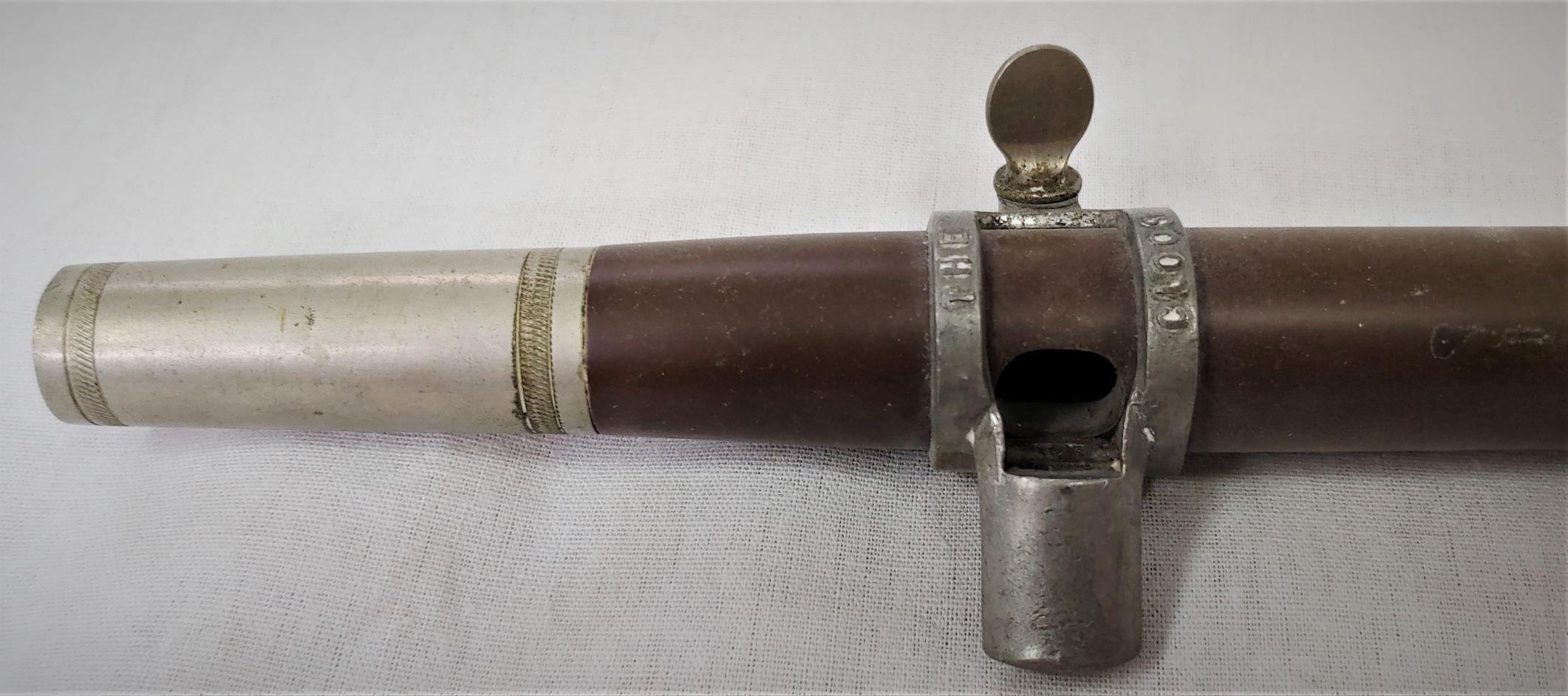

Scarce US Tactics Manual 1858
20-02-09 This is an 1858 printing of the U.S. 1829 tactics manual for Light Infantry and Riflemen. This was a new-fangled system when it first came out. The army was still trying to adjust to the introduction of these troops in addition to the old “heavy infantry,” which had actually been on the way out for some time. Light infantry was becoming all the rage, but the introduction of rifled arms for all soldiers in 1855 fueled the search for a modern system of drill and tactics.
The plates in this book show the soldiers wearing the classic 1828 style bell-crown shako and illustrate various positions of the soldier, etc. The volume is in good condition with no loose pages and just minor wear to the corners and some expected age foxing. The darker area in the photos are just shadows. No staining! I believe this is the first one I have owned dated 1858. Perfect for CSA display. $145.00
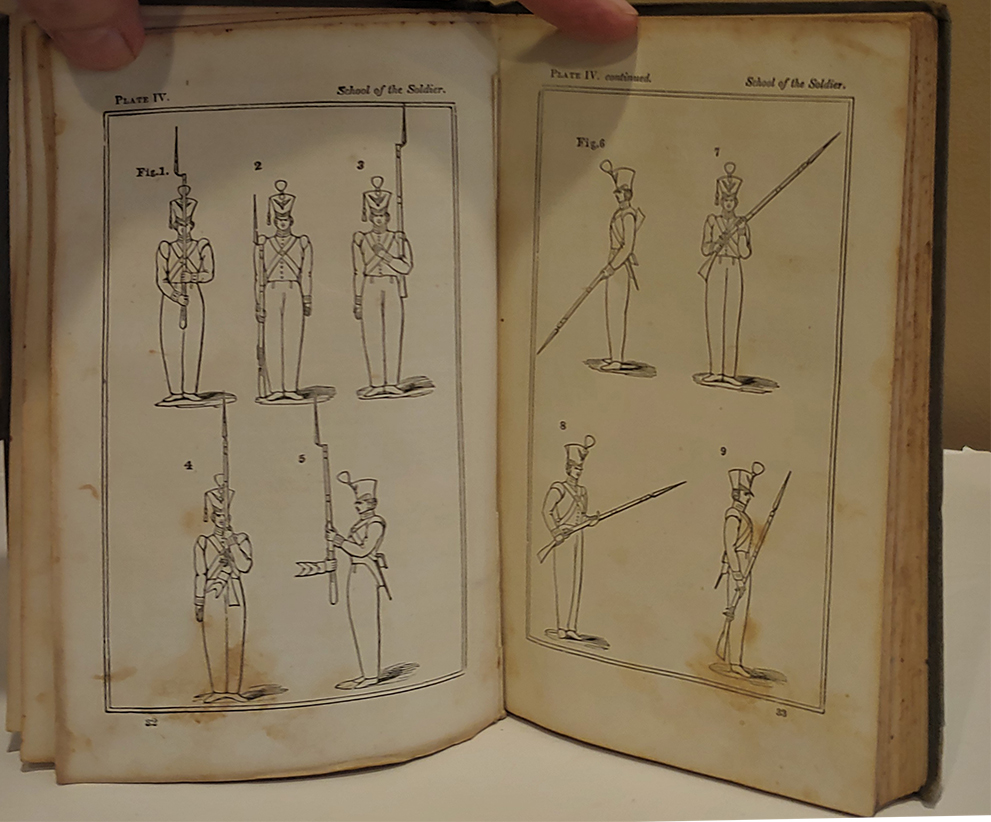

The dark area shown above is a shadow, not a stain on the paper.
Confederate Soldier’s Inscribed Book
20-02-10 Camp life was not all drill and fatigue duty, and the Edisto Rifles prided themselves on the number of college graduates in their ranks. This is a nice 1860 edition of Tennyson taken into the field by Samuel Dibble of Orangeburg for the improvement of his off-hours and is boldly inscribed in a good hand, “Dibble / Edisto Rifles, / 1st Regt. S.C.V. / 1861.”
Dibble (1837-1915) was an 1856 graduate of Wofford College, an “honors man,” and had taught at Shiloh Academy 1856 to 1858, before studying law and being admitted to the bar in 1859. The Edisto Rifles formed as militia company in 1851 in Orangeburg, SC, and had volunteered for active service in January 1861, forming Company A of the 1st SC Volunteers for one year’s service from 4/12/1861. Dibble was elected First Sergeant and although the regiment was posted to the Charleston area he is specifically named as one of the regiment who, when the regiment was temporarily “relieved from duty subject to orders,” made their way to Virginia and fought at Bull Run, attached to other companies. On 8/23/61 he was elected Third Lieutenant (or brevet Second Lieutenant) and continued as lieutenant when the regiment’s term expired and the company re-enlisted for three years and became Co. G of the 25th South Carolina. They mustered into CS service, fought at Secessionville, SC, on James Island, and were briefly posted to North Carolina before returning to the James Island area. Dibble had applied for a commission in the Confederate Corps of Engineers, just then being organized, but was captured while scouting on Long Island on 7/15/63 and sent to Johnson’s Island.
He was released on parole for exchange about 10/16/63, listed as sick from chronic diarrhea, and while at home got married before being officially exchanged around 12/15/64 and rejoining the regiment serving with the Army of Northern Virginia at Petersburg. As part of Hoke’s Division the regiment was sent south to Wilmington after Fort Fisher, and Dibble was commanding the company when he, and most of the regiment, was captured at Town Creek 2/10/65 and remained a prisoner until the end of the war.
After the war, Dibble returned to law, formed a partnership with Capt. Izlar, his old company commander, edited a newspaper, and entered politics. He took part in raising the company again for militia duty during reconstruction and was a member of the SC legislature. He filled out a vacancy South Carolina congressional delegation in 1881 and was reelected for several terms, serving in the US House of Representatives 1881-1891. He then returned to commercial interests and banking until his death in 1915.
The book shows use, with minor stains and a loose cover reattached with some crude stitching, but it has a bold and very displayable inscription and looks great displayed with a Confederate officer’s effects. Researcher Steve even found a photo of Dibble online which we show below. The internet is AMAZING! $375.00
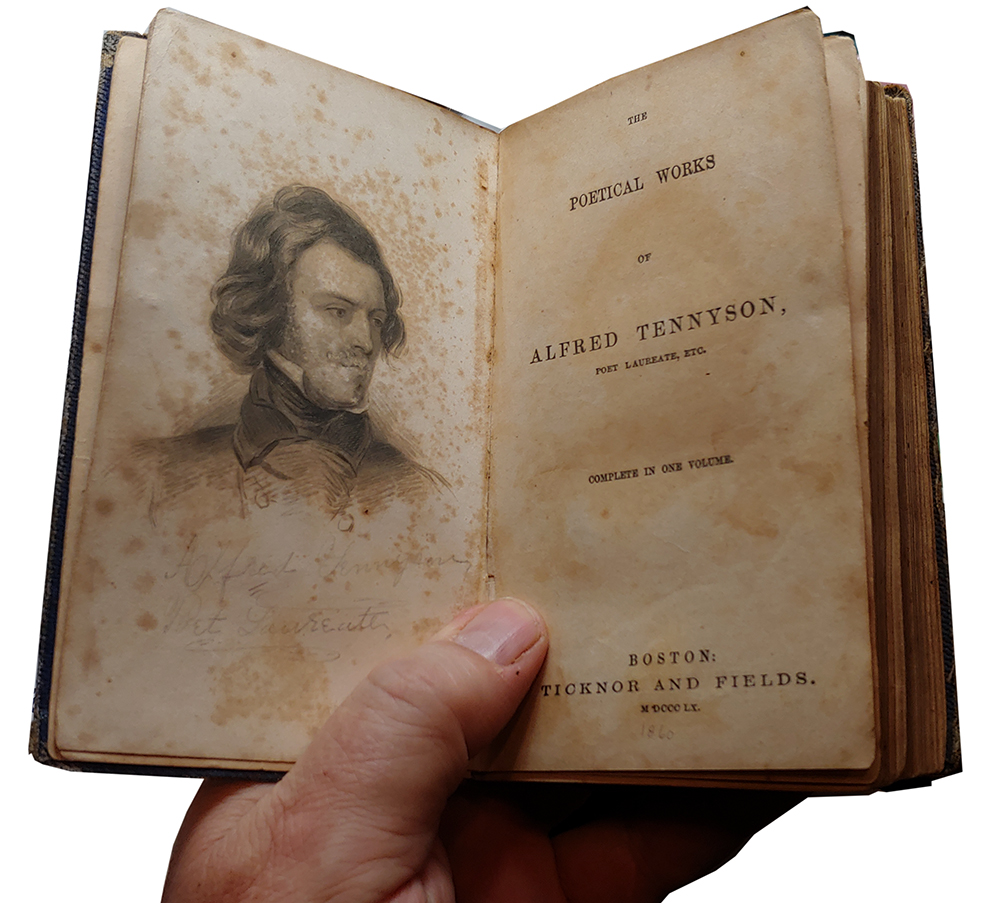
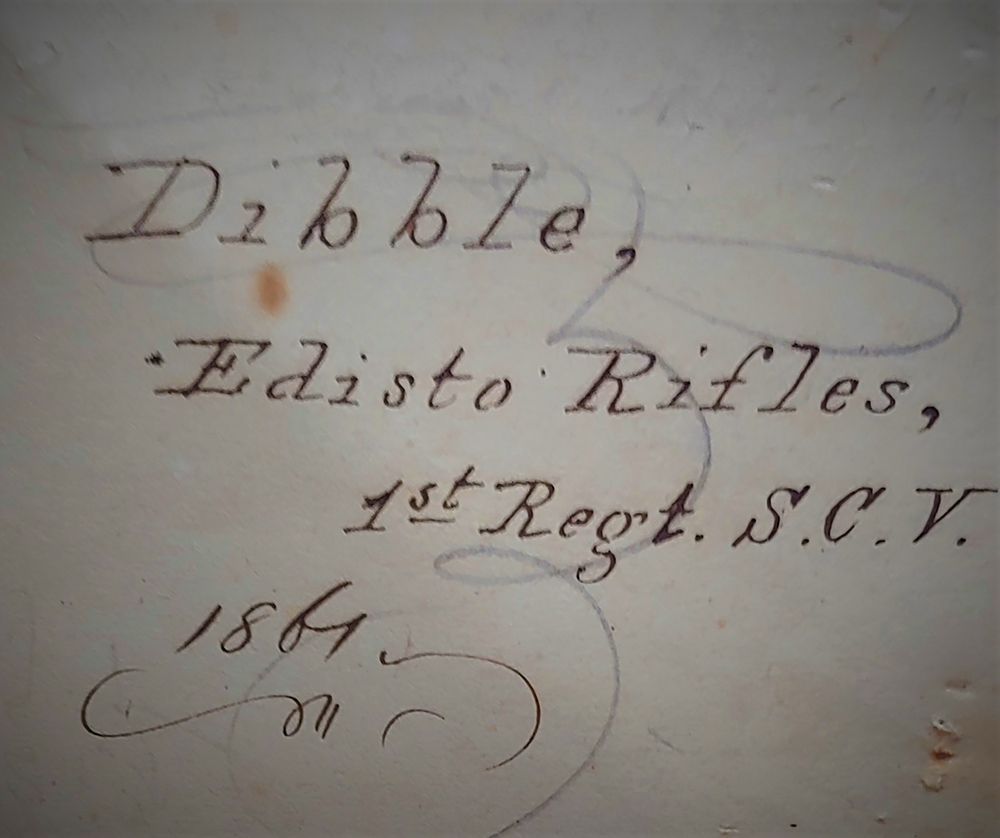
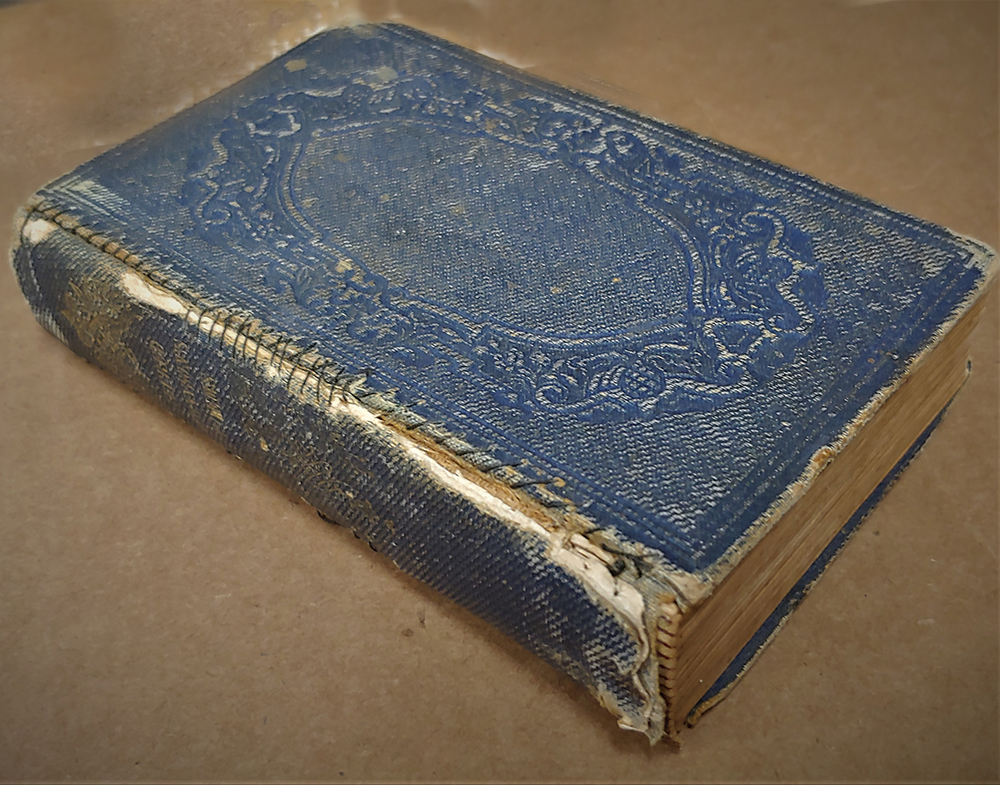

****
Revolutionary War Trench Spear
20-02-11 In our collecting world there is a lot of new-made iron out there masquerading as everything from rifleman’s knives and Confederate Bowies, to boarding axes and chainshot. This weapon is dead-real. Measuring about 10-1/2 inches overall, it is hand forged from one piece of iron, with a raised median ridge on one side of the blade, and a rounded back, with the socket drawn out, overlapped, and hammered to form a receptacle for a wooden shaft. This is often referred to as a “trench spear,” used in defending fortifications, most often from the embrasures through which artillery fired and which were potential points of entry for the attackers. These were almost always locally made and simply constructed. I have no find location for this, but numerous similar examples have been excavated from Revolutionary War sites, particularly forts, and their common element is their simple and effective design. The deep brown black rust patina is exactly what we expect to see on iron weapons dating 250 years old or older This example is in very nice condition, showing age-appropriate crustiness and corrosion. Never cleaned or altered by modern collectors. $250.00

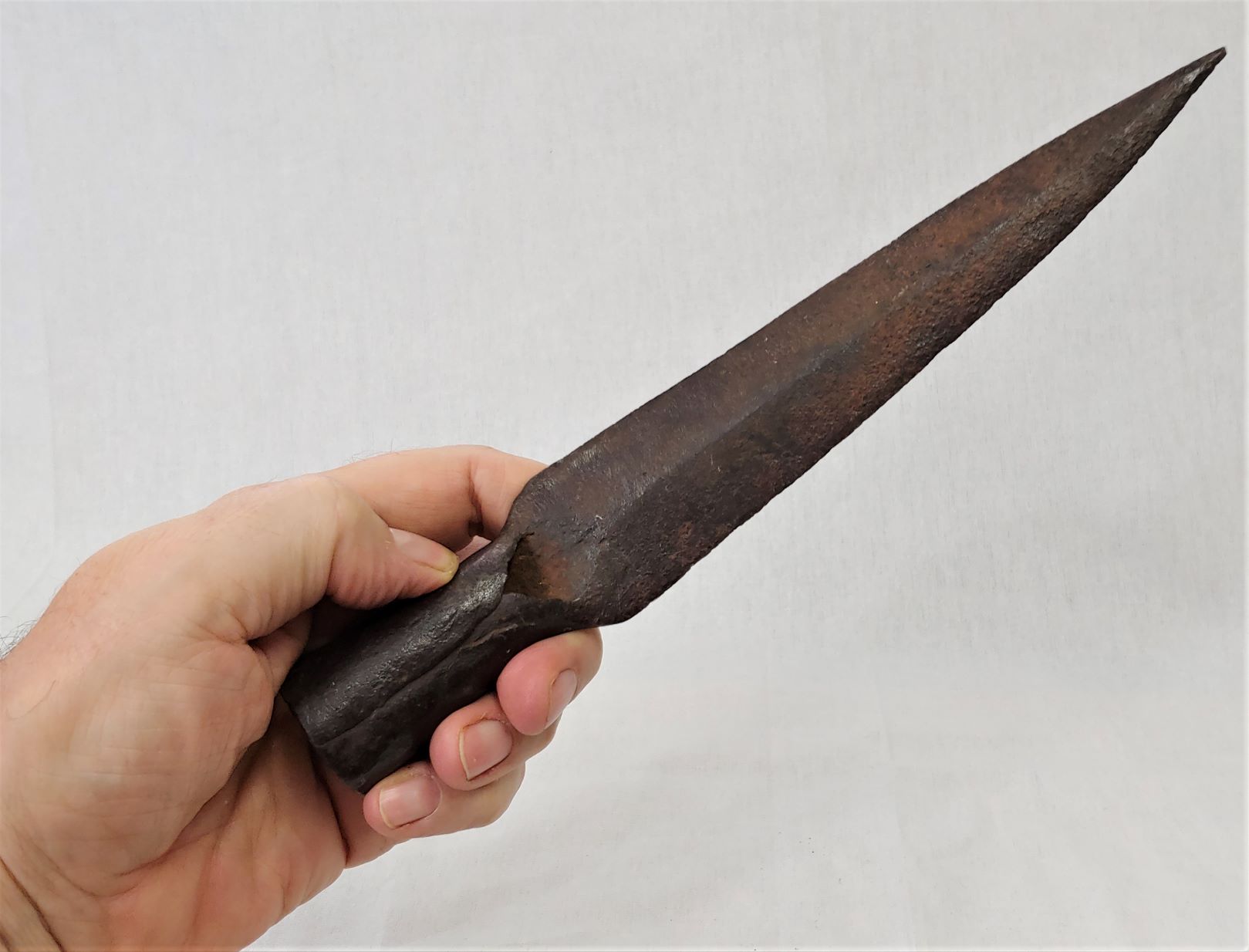


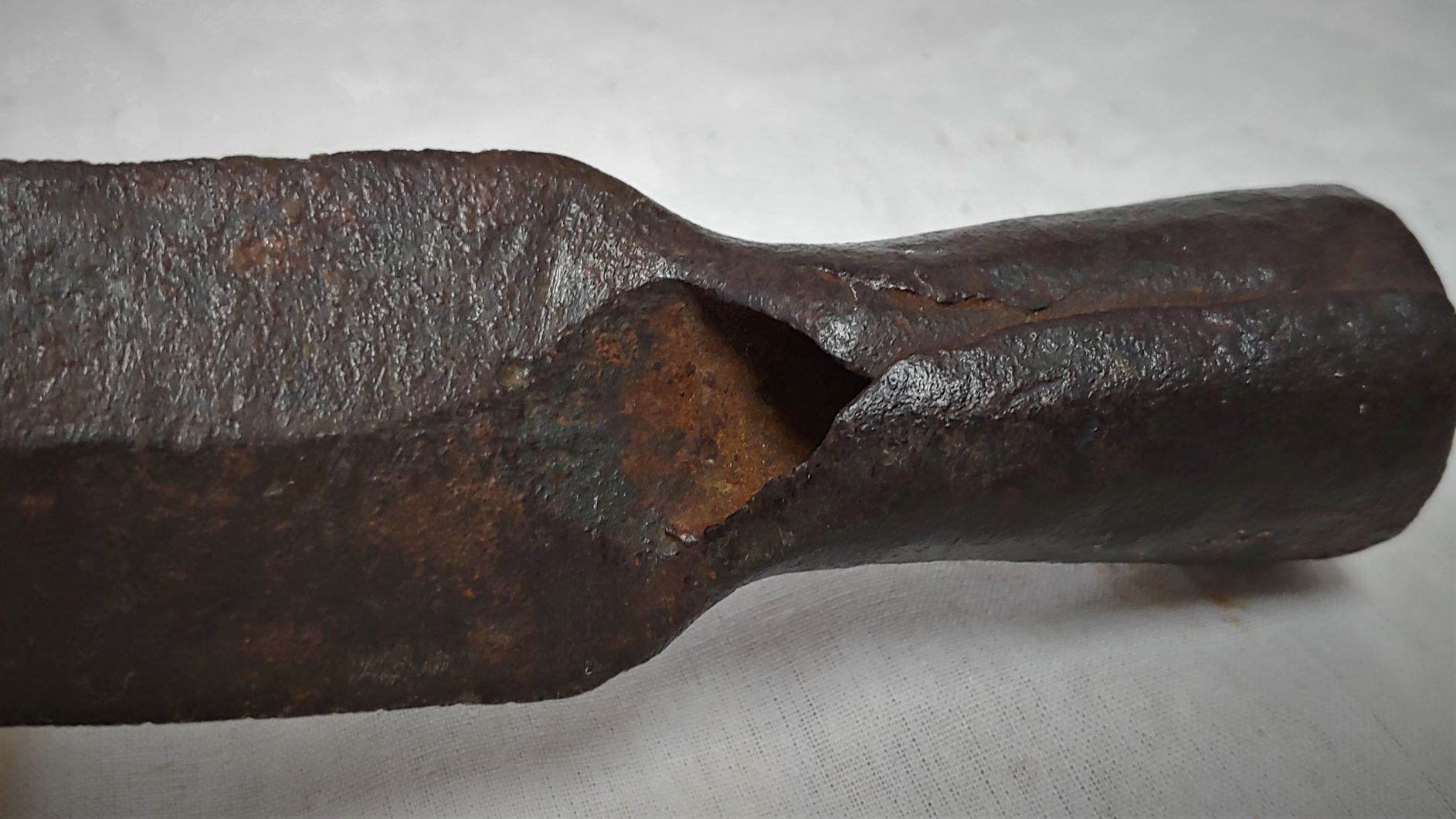
******
Fine Condition M1816 Bayonet
20-02-12 This bayonet has excellent smooth metal with no pitting, a good point and edges, and nice muted silver tone mixed with a little brown from age and vestiges of arsenal lacquer brown finish. I see just a few tiny pinpricks and rubs to the sides of the blade just where it meets the neck. The “U.S.” stamp is sharp and a sub-inspector letter stamp “F” near the T-slot is crisp. The 1816 musket went through a number of variations and remained the main infantry musket through the Mexican War. This would go very well with a better-condition example. Rates near fine. $145.00
****
Enfield Bayonet and Scabbard
20-02-13 Complete rig… bayonet and scabbard for the P-53 Enfield rifle musket in .577 caliber. This is the standard Civil War Enfield as carried by tens of thousands of soldiers north and south. Fine to excellent condition. Leather is super. Bayonet has traces of original blue. Brass has some age staining. A top notch rig. $245.00

Full Package Hall Rifle+Carbine Ammo
20-02-14 Hall cartridges are distinguished by their red and white tie strings. They are tough to find on their own and a pack is cause for renewed attendance at church. In this case, we have a full pack, complete with its original “twist” of percussion caps, in its original wrapping paper. This was part of Gene Spicer’s lifetime collection until last month. Gene passed away and his wife sold some of his cartridges. The only thing replaced is the tie-string for the pack. This is not a big drawback. It enables the contents to be displayed and appreciated, without having to worry about disturbing the original knots.
The Hall was an advanced weapon for its time. It was a breechloader and its manufacture pushed forward the “American system” of close tolerances and interchangeable parts. It did, however, have a rather long, vertical nipple and flash channel that had the disconcerting effect of lighting a fuse when you fired it, but that was a small price for progress. This is an extremely scarce pack of cartridges for either the rifle or carbine and would look great in any collection relating to the early west, early Indian wars, U.S. expansion of the frontier, or U.S. technology. (I include the replacement length of twine that can be used to close the pack.) $1,250.00
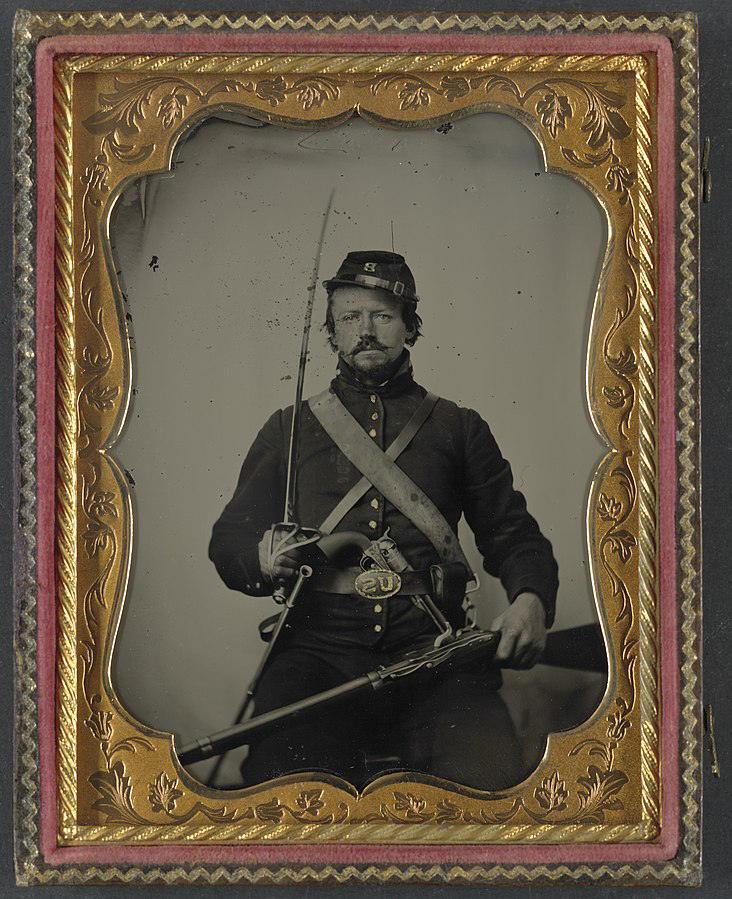
The above image is for illustrative purposes only. It is not available for purchase.
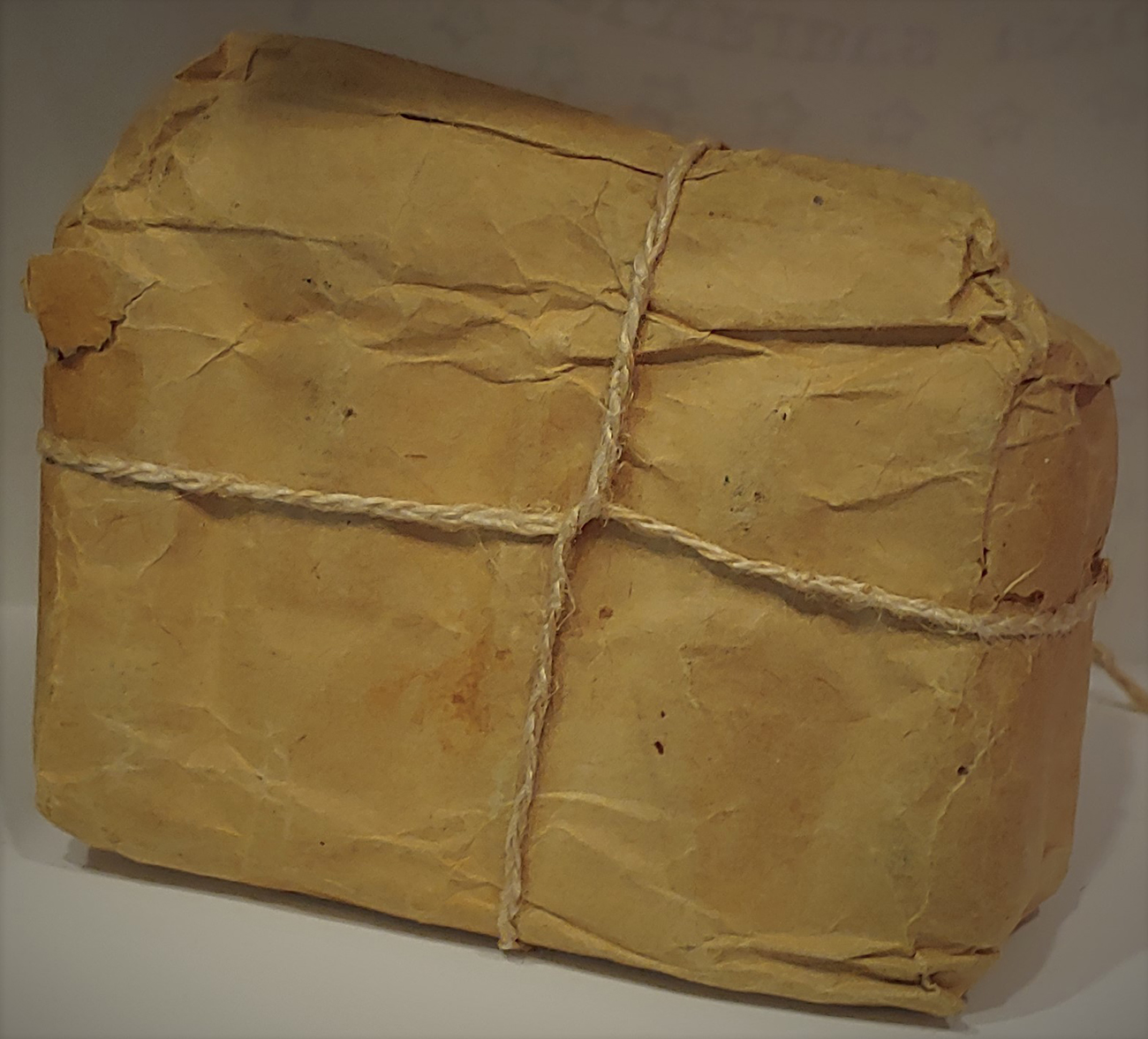
String is replaced using period twine
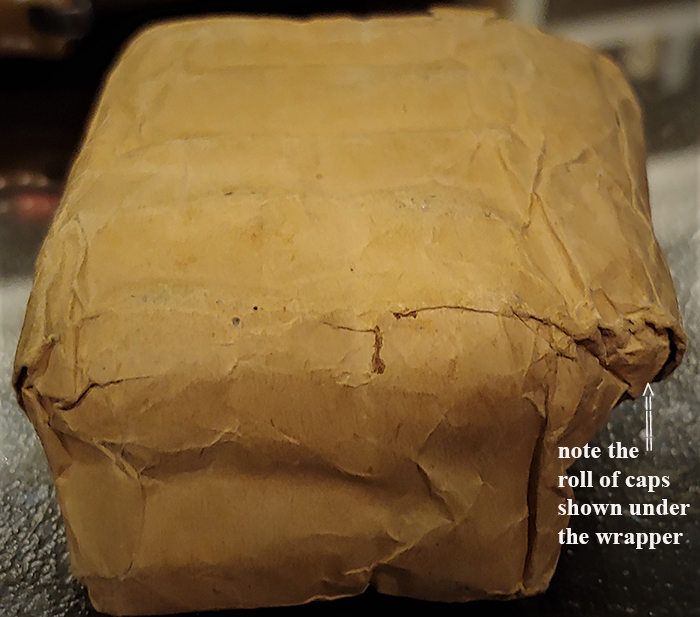
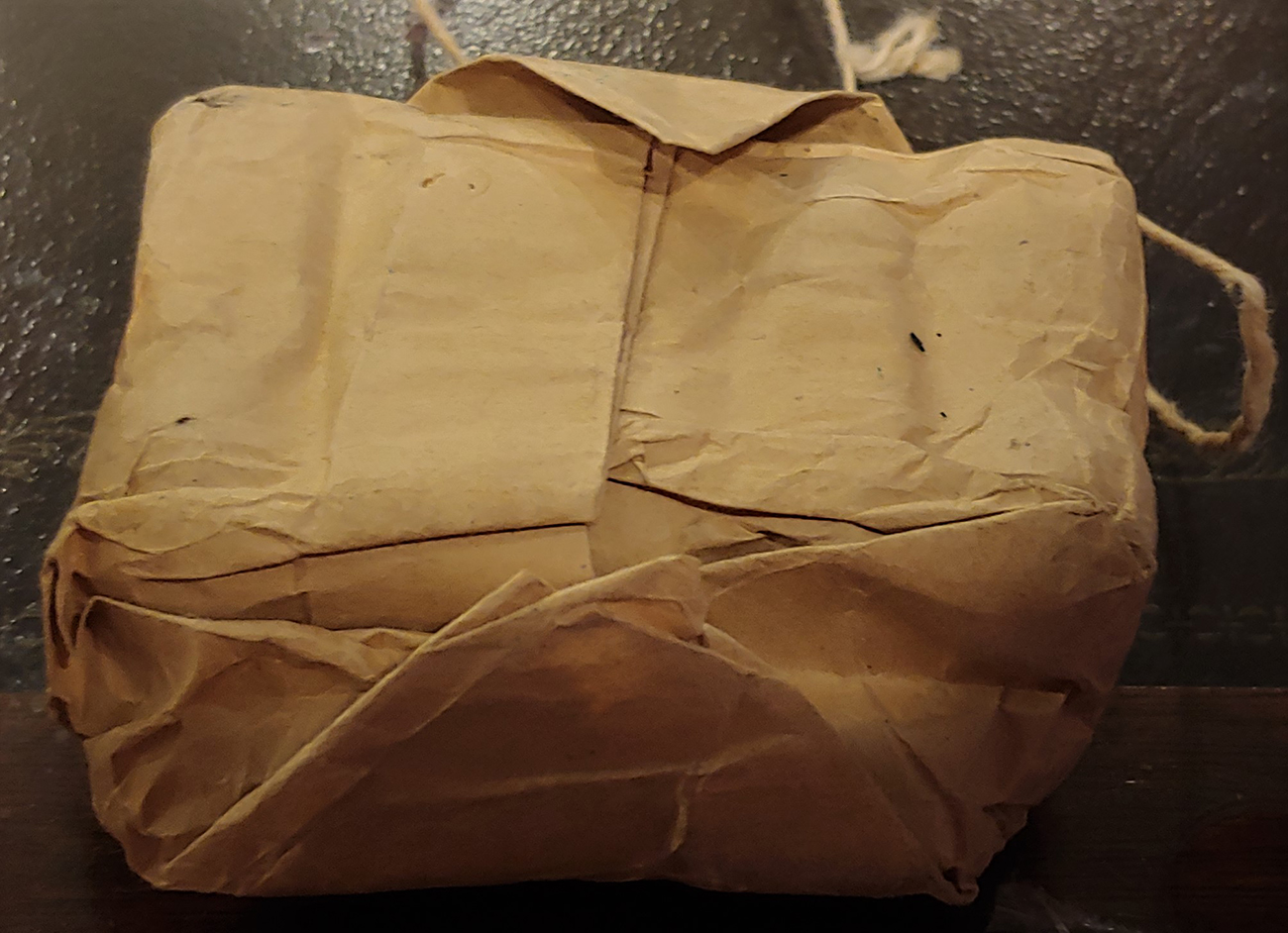



Full Box (qty.42) Early Spencer Cartridges
20-02-15 Full boxes of Civil War ammo are scarce. This Spencer box is full and early, containing six smaller cardboard packs of seven rounds each and a full label indicating the box holds 42 metallic cartridges for, “the Spencer & Joslyn Carbine, No. 56 Navy and Infantry Size, Manufactured by Crittenden & Tibbals of Coventry, Conn. U.S.” These are the scarce 56/56 rimfire cartridges for the 1860 Spencer infantry and navy rifles whose bullets are a little longer and heavier than the standard .56-.50 carbine cartridge. As the label indicates, they were also used in the rimfire M1862 Joslyn carbine, which was first produced in Spring 1863, about the time Spencer rifles for the army began to appear. The navy rifles came out very early in the war, the army models mid war, and carbines mid to late war. The label specification that they are “Navy and Infantry Size” tells us these are the heavier early rounds for use in the long 3-band rifles.
The top of the box has a slight separation line at top right and some dimples along the rear edge. The bottom of the box is largely missing and was wrapped in paper to keep the individual packs together. It was subsequently wrapped in plastic by a collector and I have left it that way since it shows the packs are all there. One has a piece of string on the bottom a partial opening showing one of the rounds, which is not a bad thing since it shows all the cartridges are there. In any case, it is the label on the top of box that really counts and it makes a great display with a Spencer rifle. Each individual pack of seven rounds is easily worth $125.00. We have six of these packs. The label on the box has a value of $200. This package is bargain priced at $550.00
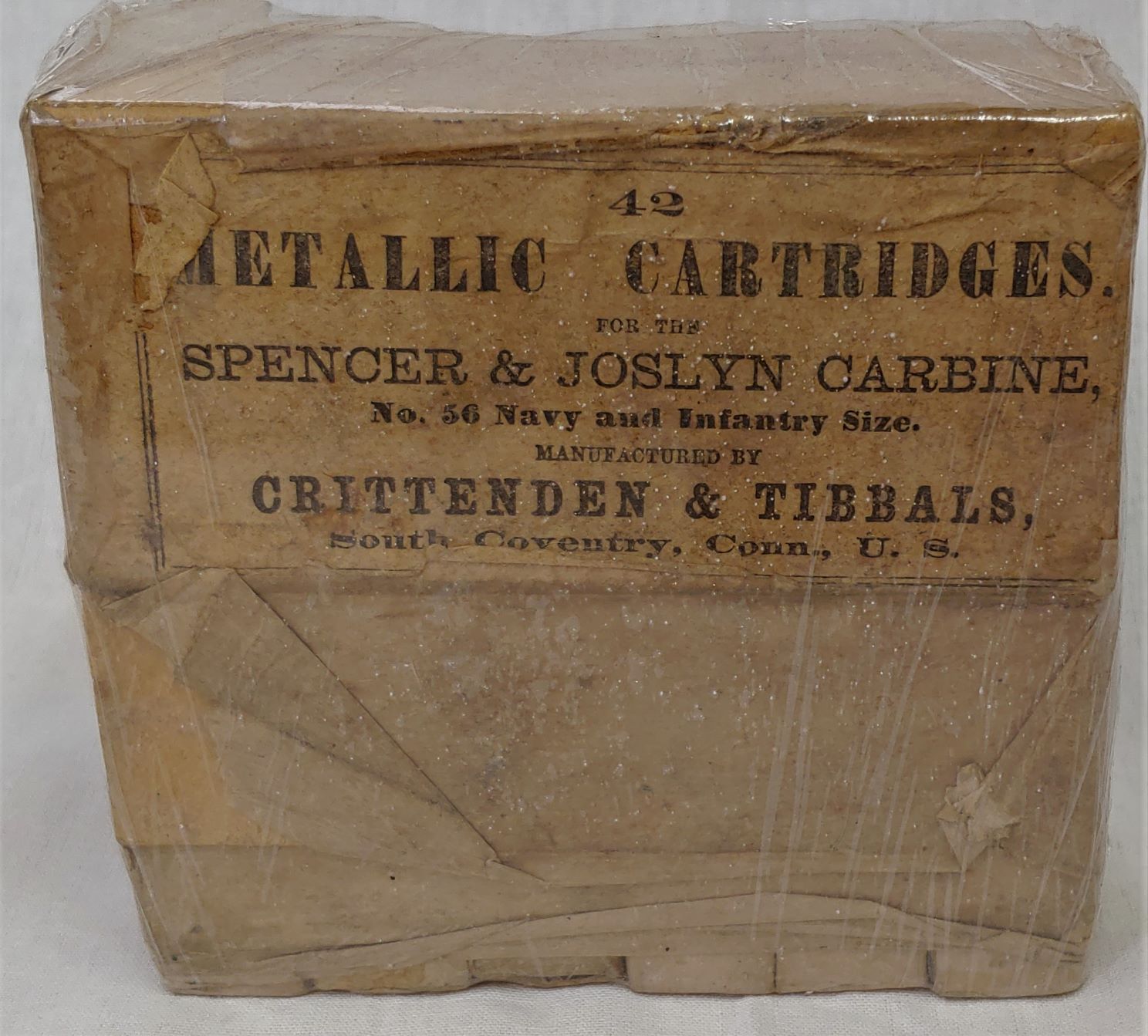

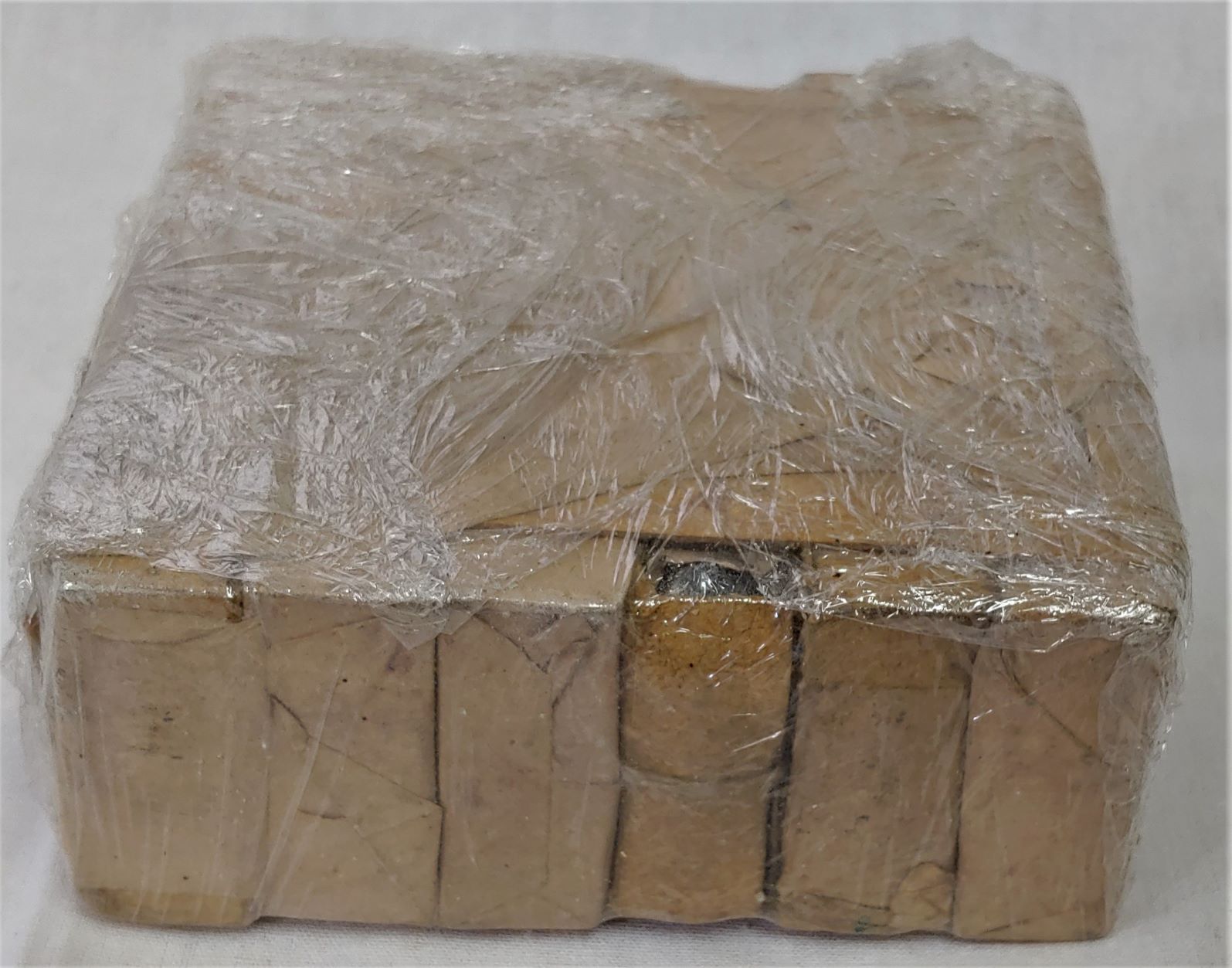
Winchester 25-20 Reloading Tool 1882
WINCHESTER 25-20 RELOADING TOOL
This has the Winchester, New Haven, stamps and the caliber 25-20 markings with 1874 and 1882 patent dates. The caliber has no “SS” or “R” markings, indicating it was for the early single-shot rifle, the longer cases for the Model 1892 being designated “R” for repeater and the single-shots by “SS” thereafter.
This has some minor handling dings, but is generally smooth metal and even shows a little blue around the hinge pin. I do not know if this will still function or not, or if it is missing any little parts. I am not an expert on such tools. Hence, you can buy this from me for $30.00
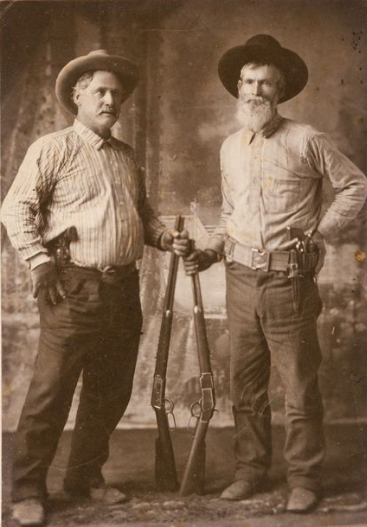
Desc
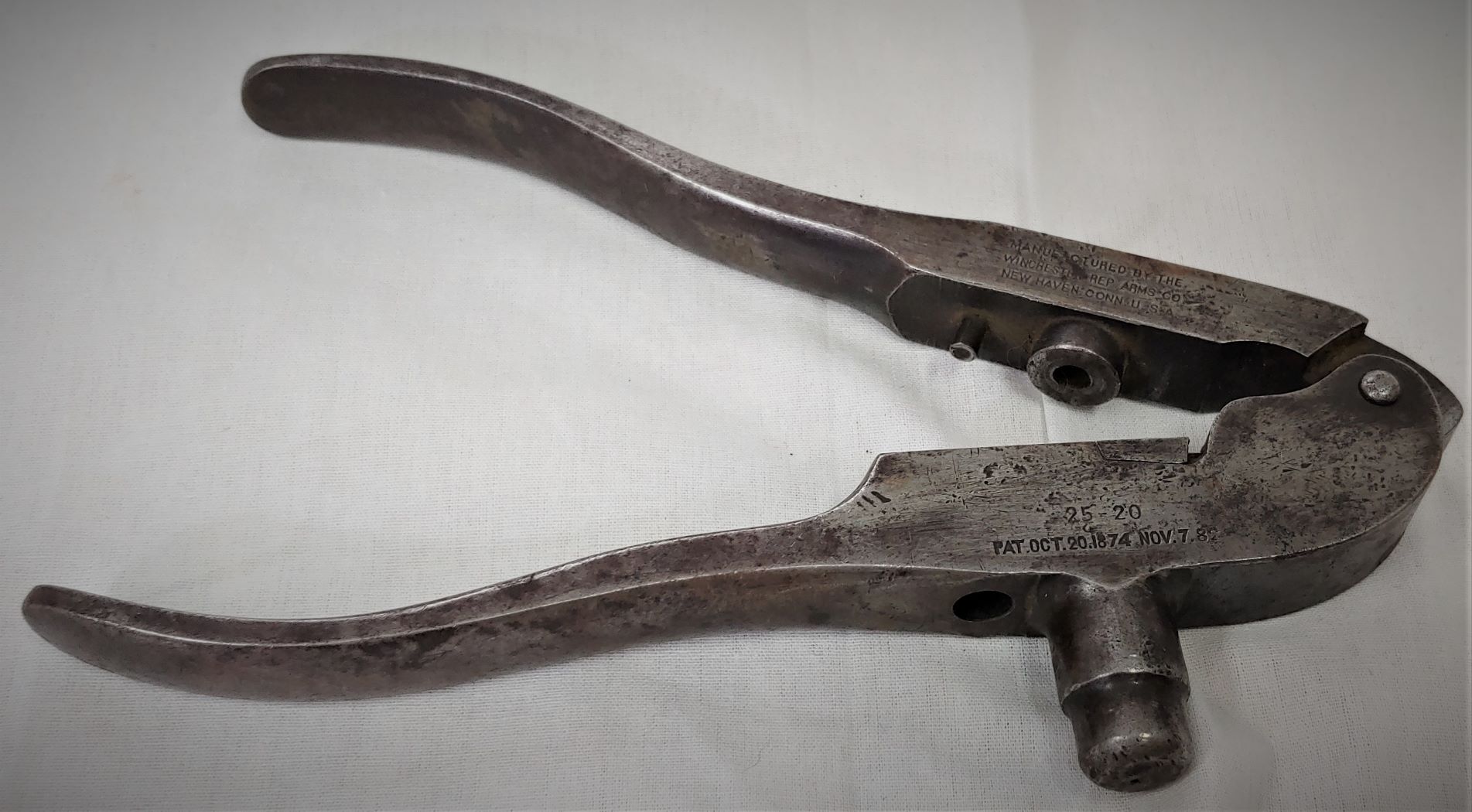
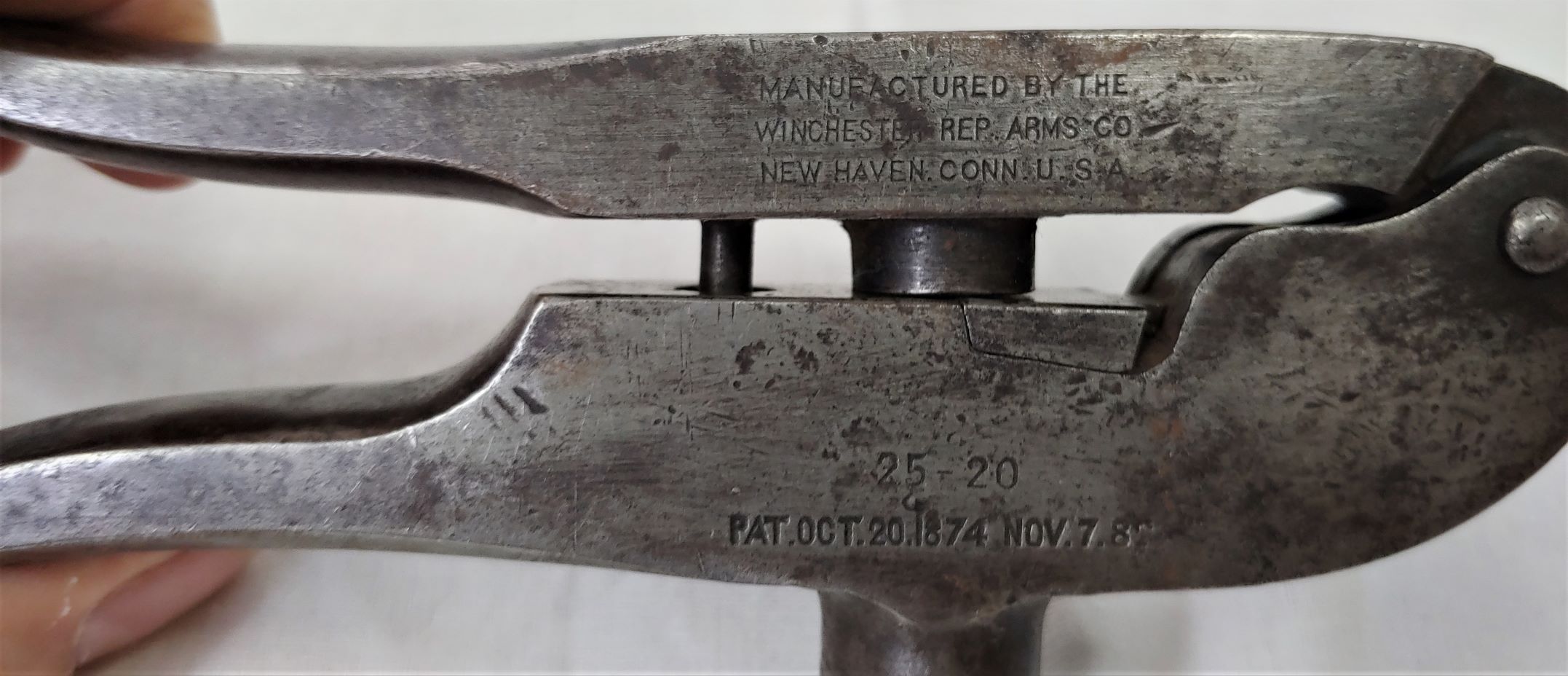
Layaways are Welcome
Need to split your order into multiple payments? No problem! A simple 20% earnest money deposit will hold your item for you.-acf
You can then pay it off in easy installments that fit your budget.
Read Terms Here
Items to Sell? Contact Us
I am always interested in buying ANYTHING from the American Civil War… Guns, Swords, Civil War Muskets, Knives, Uniforms, Flags, Medals, Badges, Diaries, Letters, Autographs, Buttons, photographs, tintypes, daguerreotypes, Insignia, Camp Items, Battlefield Relics, canteens, Drums, Etc… Call 419-842-1863 and ask for Dave Taylor.


